A physician by profession, having a passion for media and commitment to serve the larger humanity, with special focus on women’s empowerment, Dr. Manju Sheth is a Board Certified Internist, currently serving patients at Beth Israel Lahey Hospital.in the Boston Region in Massachusetts.
Dr. Sheth wears many hats to her credit. A multi-tasker and with full of energy, Dr. Sheth says, “If you want to do something in life then you will find a way.” It has not been easy to be “a physician, mother, media personality, and be involved in our vibrant New England community and the media world, but each of my involvements is truly important to me, and I give my full heart and energy to each of them. I always remind myself, that anything worth having has to be worked for.”
Recalling her childhood, growing up in India, and about her ambitions in life, Dr. Sheth says, “Growing up in a close-knit family, I had a wonderful childhood with two great parents and two wonderful brothers.” Dr. Sheth is proud that “I have made my mom’s dream a reality by becoming an accomplished Doctor.”
 Dr. Sheth had a passion for writing from school days onwards. “I always loved to write and was also the editor of my school magazine and wrote for local magazines as well. Although journalism was not the most popular career for women in India, especially in those days, “it remained a big passion for me. I have always been intrigued by people’s stories. And once I was well settled in my medical career, I decided to pursue my passion for media as well. The media world has given me the opportunity to meet amazing people, and bring a platform to unique and powerful stories.”
Dr. Sheth had a passion for writing from school days onwards. “I always loved to write and was also the editor of my school magazine and wrote for local magazines as well. Although journalism was not the most popular career for women in India, especially in those days, “it remained a big passion for me. I have always been intrigued by people’s stories. And once I was well settled in my medical career, I decided to pursue my passion for media as well. The media world has given me the opportunity to meet amazing people, and bring a platform to unique and powerful stories.”
Having endowed with the gift of writing, Dr. Sheth is known to be a natural storyteller and “I truly believe that every life has a story and a dream. I’m always looking to hear stories of everybody’s life, in everyone that I meet, and then I look to find the right platform and the right medium to showcase it.” Her popular “Chai with Manju” celebrity series is one of the most read news features in the New England region, where she featured celebrities and spiritual leaders such as Sadhguru, Sri Sri Ravi Shankar, the Kennedys and the like.
 Dr. Sheth was the co-founder and CEO of INE MultiMedia, a non-profit organization devoted to promoting and supporting charitable organizations, art, culture, education and empowerment through workshops, seminars and multimedia. Dr. Sheth is a former trustee of the Indian-American Forum for Political Education. Dr. Sheth is very dedicated to the education of the community about health related issues, and is also the producer and chair of the annual free mega Health & Wellness Expo.
Dr. Sheth was the co-founder and CEO of INE MultiMedia, a non-profit organization devoted to promoting and supporting charitable organizations, art, culture, education and empowerment through workshops, seminars and multimedia. Dr. Sheth is a former trustee of the Indian-American Forum for Political Education. Dr. Sheth is very dedicated to the education of the community about health related issues, and is also the producer and chair of the annual free mega Health & Wellness Expo.
“I am a very genuine person, what you see is what you get,” says Dr. Sheth about herself. “There is nothing fake or unauthentic in what I do. I am very creative with a big vision, always looking to create & conceptualize the next exciting project. I am also a very positive person and make conscious effort to not have any negativity around me because I believe that negativity & conflicts crush creativity.”
Dr. Sheth has been a big advocate for empowerment of women and she has invested her time, energy and efforts all her life more than any other cause. “I’ve always had a passion for women empowerment, and I bring that to all the projects and opportunities I pursue,” she says. She has served on the board of ATASK (Asian Task Force Against Domestic Violence) and as the Chairperson of Saheli, a prestigious Boston based organization, whose mission is to empower South Asian women to lead safe and healthy lives.
Having served on spreading awareness on women’s rights, Dr. Sheth says, “My biggest focus right now is the new Women who win # Dreamcatchers platform where we showcase dreams, passions & life lessons of a women’s journey on our website, womenwhowin100.com and on multiple social media platforms. And this initiative keeps me stay motivated each and every day.”
 Born out of combination of her passions for both media and women empowerment, this noble initiative was co-founded by Dr. Sheth, her daughter, Shaleen Sheth, and her close friend, Deepa Jhaveri. The new global media platform is founded with the “mission to empower women across all ages, industries, and backgrounds, bringing women from around the world together daily with our inspiring, relatable, and relevant original stories,” Dr. Sheth explains. “With thousands of members and daily readers, our membership and our readership spans over 80 countries, and across the United States on our multiple social media channels.”
Born out of combination of her passions for both media and women empowerment, this noble initiative was co-founded by Dr. Sheth, her daughter, Shaleen Sheth, and her close friend, Deepa Jhaveri. The new global media platform is founded with the “mission to empower women across all ages, industries, and backgrounds, bringing women from around the world together daily with our inspiring, relatable, and relevant original stories,” Dr. Sheth explains. “With thousands of members and daily readers, our membership and our readership spans over 80 countries, and across the United States on our multiple social media channels.”
How does this new platform reach and inspire women across the world, especially during the Covid pandemic? The new and unforeseen challenges did not deter the creative energy of Dr. Sheth. “We wanted to bring positivity and inspiration, reminding women to continue chasing their dreams and make it a reality. Through story-sharing and skill-sharing ,we equip our readers and members to pursue their next dream. By voicing their story on our platform, they see that their dream is achievable, and there is a whole network of women and mentors around the world encouraging them and celebrating each other. And, I am truly excited for this new journey,” describes the women’s leader.
 She served as the president of Indian Medical Association of New England in 2013. Upon her election to be the president of Indian Medical Association of New England (IMANE) Dr. Sheth said, “My goals for the group in the coming year include strengthening ties with the research and academic medical community, deepening IMANE’s many charitable, social and professional activities and organizing a collaborative health expo that will bring various hospitals and health care providers together with the Indian community.” At the end of her presidency, she had accomplished her goals and was highly praised for her leadership.
She served as the president of Indian Medical Association of New England in 2013. Upon her election to be the president of Indian Medical Association of New England (IMANE) Dr. Sheth said, “My goals for the group in the coming year include strengthening ties with the research and academic medical community, deepening IMANE’s many charitable, social and professional activities and organizing a collaborative health expo that will bring various hospitals and health care providers together with the Indian community.” At the end of her presidency, she had accomplished her goals and was highly praised for her leadership.
She has played an important role as the Director of the annual Woman of the Year award show, a Flagship Event of India New England News, which recognizes and honors South Asian women of New England for the past eight years , She is the co-producer and creator of New England Choice Awards along with Upendra Mishra, This is one of the most popular and much awaited shows in New England, which has honored Nitin Nohria Desh and Jaishree Deshpande, and many others who have given back to the larger society.
Describing herself as “a visionary with a mission,” Dr. Sheth, a diehard optimistic person, says, “Once I am convinced on a mission to accomplish something, I give my one hundred percent to the cause. I am also quite a perfectionist .I do tend to work 24/7 as I get closer to my big events & am often reminded by my family & friends to take a break .”
Calling herself a “diehard mystery buff,” Dr. Sheth who was trained in Medicine in London, says, “I have been in love with British mysteries as well as mystery shows.” Having a background with varying interests and diversities has been a huge blessing. “I am a Sindhi from Delhi married to a Gujrati and went to college in Kolkata,” says Dr Sheth. “I am also very good cook. And I love cooking great Sindhi,Guju & Bengali food is my specialty. Spending time with family& friends, of course is the most important thing in life.”
What motivates her to do what she has been doing all her life? Imbibed with the desire to give back to the world that has given her much, Dr. Sheth says, “I just like to make things better than what they are. Whatever I am doing in life, whether it’s seeing my patients, cooking, doing a social or media project, I have to do it better than the last time. I have to do be a better person in the evening than I was in the morning. It’s my inherent need for constant improvement that motivates me.”
 Although Dr. Sheth and her accomplishments are well known in the New England region, she says, “My greatest achievement in life is being a mother and raising my beautiful daughter. She is everything that a mother could dream off in a child. She’s smart, kind, compassionate and she has a lot of gratitude for the opportunities that life has brought her.” One of the first things that she taught her daughter as well was her favorite quote is that “if you reach for the moon then at least you land among the stars.”
Although Dr. Sheth and her accomplishments are well known in the New England region, she says, “My greatest achievement in life is being a mother and raising my beautiful daughter. She is everything that a mother could dream off in a child. She’s smart, kind, compassionate and she has a lot of gratitude for the opportunities that life has brought her.” One of the first things that she taught her daughter as well was her favorite quote is that “if you reach for the moon then at least you land among the stars.”
Dr. Sheth is grateful to all who have made her what she is today. She believes that so many people whom she has met in life have inspired her and taught, and motivated her dream big and give her best to all the noble causes and dreams. “Gratitude is important for me .I never forget any kindness or someone going out of their way for me in life,” says Dr. Sheth. She expresses her gratitude to her “mom and my grandmother, and in the public sphere, it is Oprah. I like her ability to empathize with people and always land on her feet no matter what is thrown at her in life.”
Recognitions and awards came her way as her noble works came to be recognized by the larger society. The Commonwealth of Massachusetts recognized Dr. Sheth for her contributions to the medical community and her empowerment and promotion of other successful women of South Asian descent throughout Massachusetts. YWCA Boston, one of the nation’s oldest organizations which has been striving to create racial, gender and social equity in Boston for 150 years, inducted Dr. Sheth along with Mindy Kaling in its list of 150 Boston Women of Influence Series recently. She has been widely recognized for her community services, and was voted Woman of the Year in 2011 as well as among the top 50 most influential Indians in New England.
Dr. Sheth is married to a physician, Dr. Dipak Sheth, and has a 22 year old daughter Shaleen. Her message for everyone is: “Always do the right thing. I feel that somehow life works out if you follow this principle. And pick a journey of your choice and be your best .I am not a fan of mediocrity.”


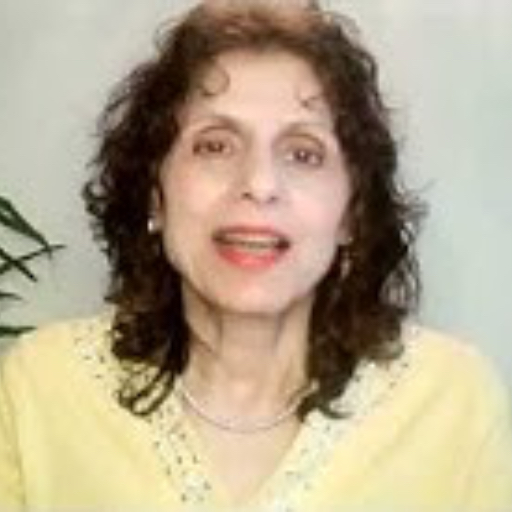

 In addition to Gunjan Rastogi, who has become the President of NIAASC, Bhavani Srinivasan, currently serving as the Vice President was reelected for the second full term. Harbachan Singh, currently a Board member, was elected as the Secretary, and E M Stephen, associated with NIAASC since its inception, was elected as the Treasurer.
In addition to Gunjan Rastogi, who has become the President of NIAASC, Bhavani Srinivasan, currently serving as the Vice President was reelected for the second full term. Harbachan Singh, currently a Board member, was elected as the Secretary, and E M Stephen, associated with NIAASC since its inception, was elected as the Treasurer.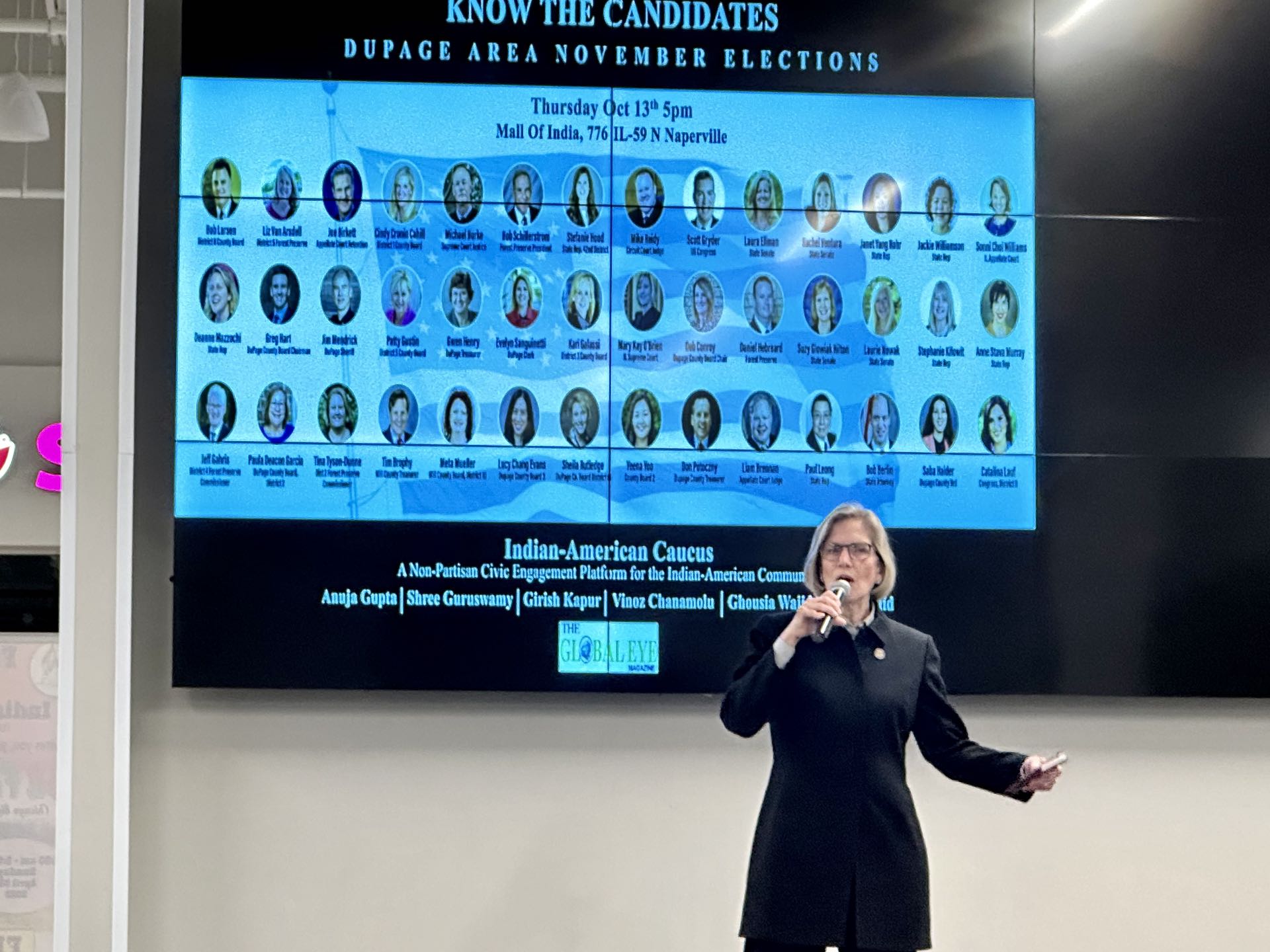

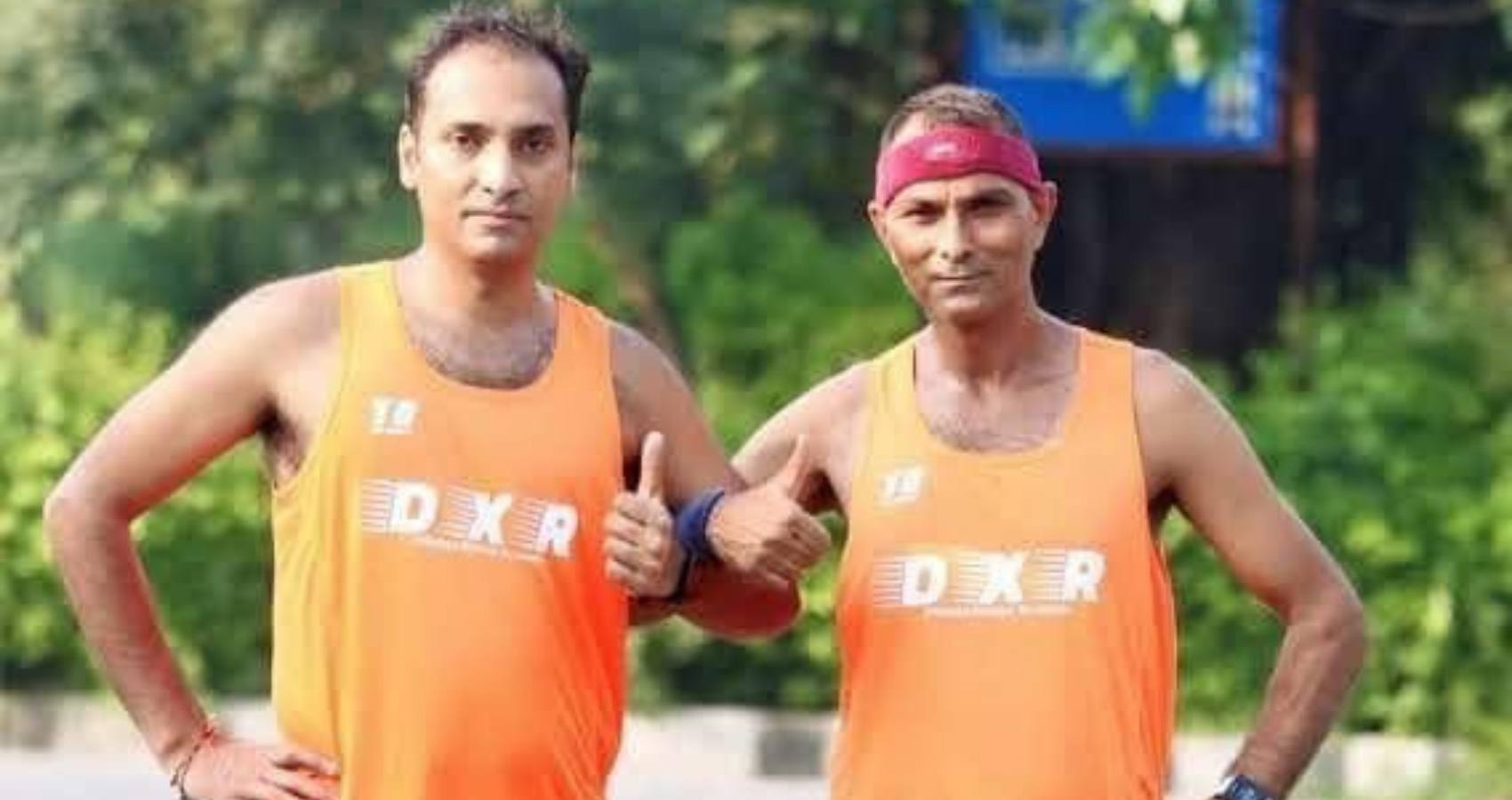
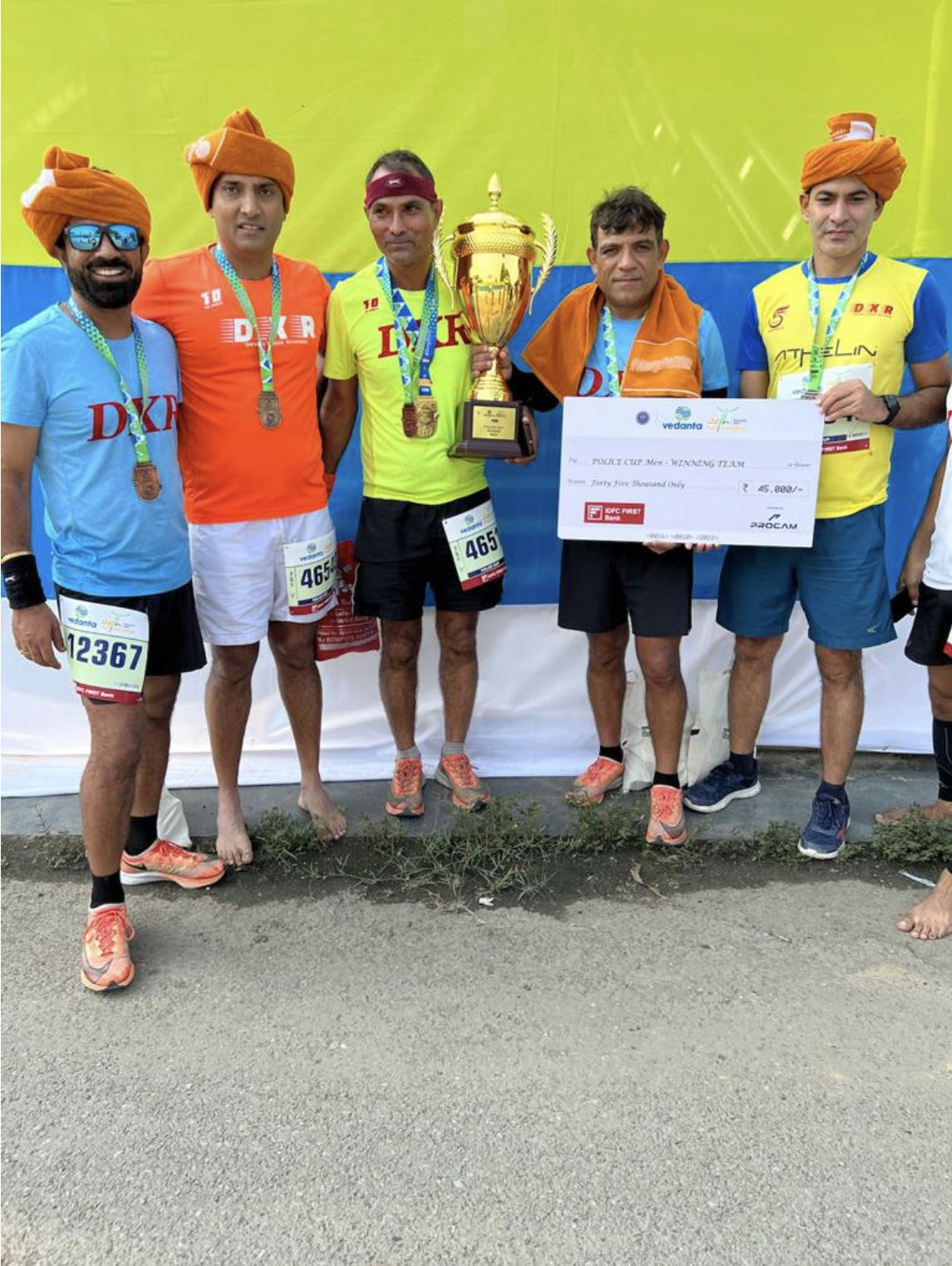
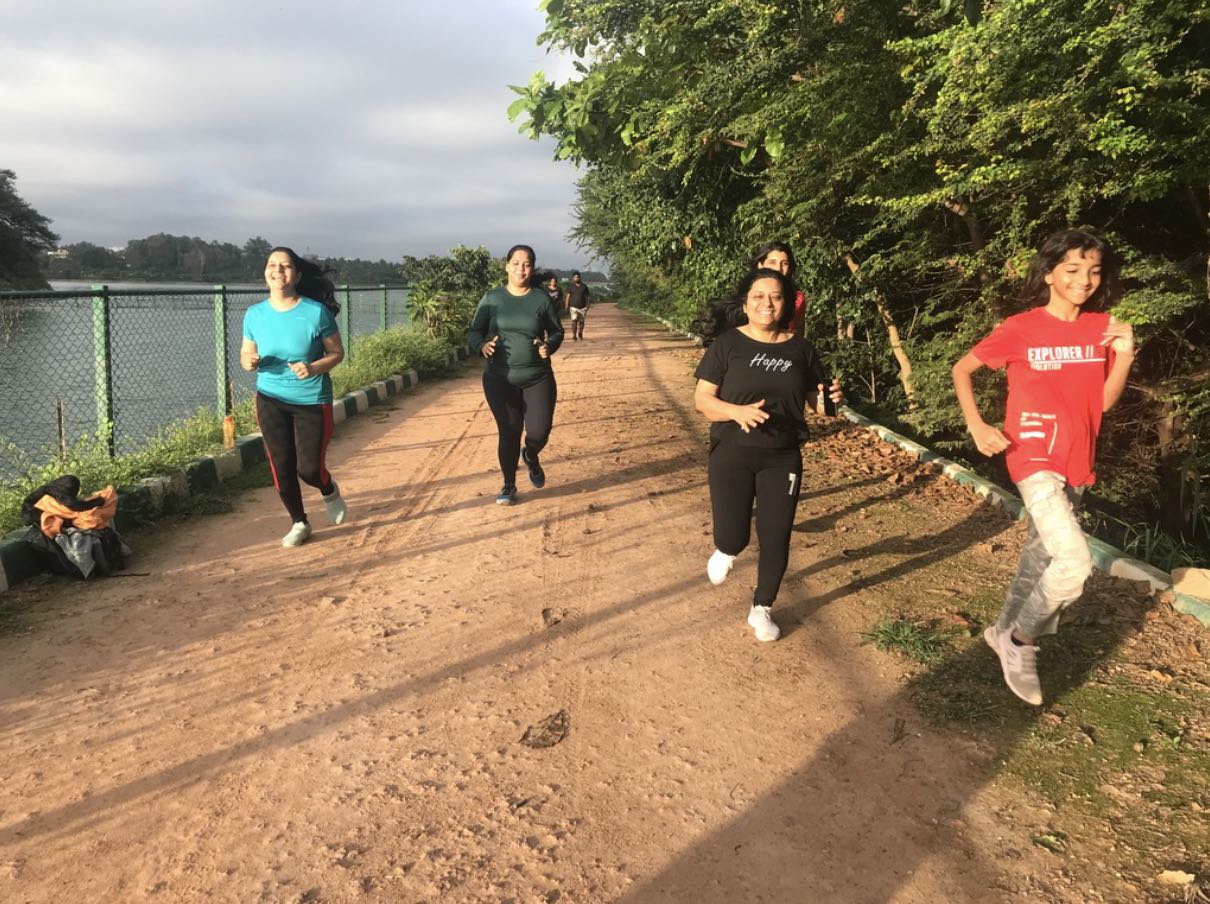

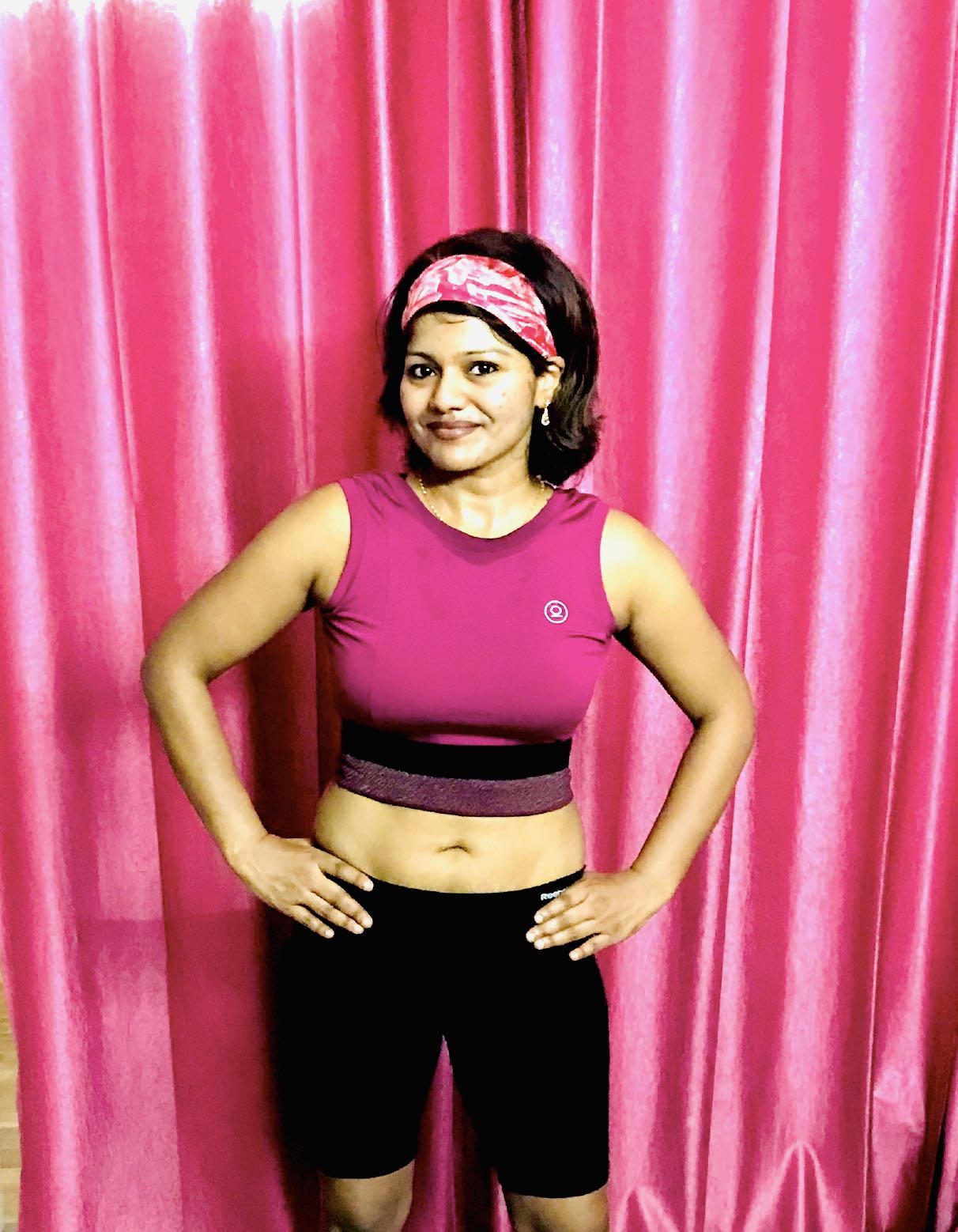

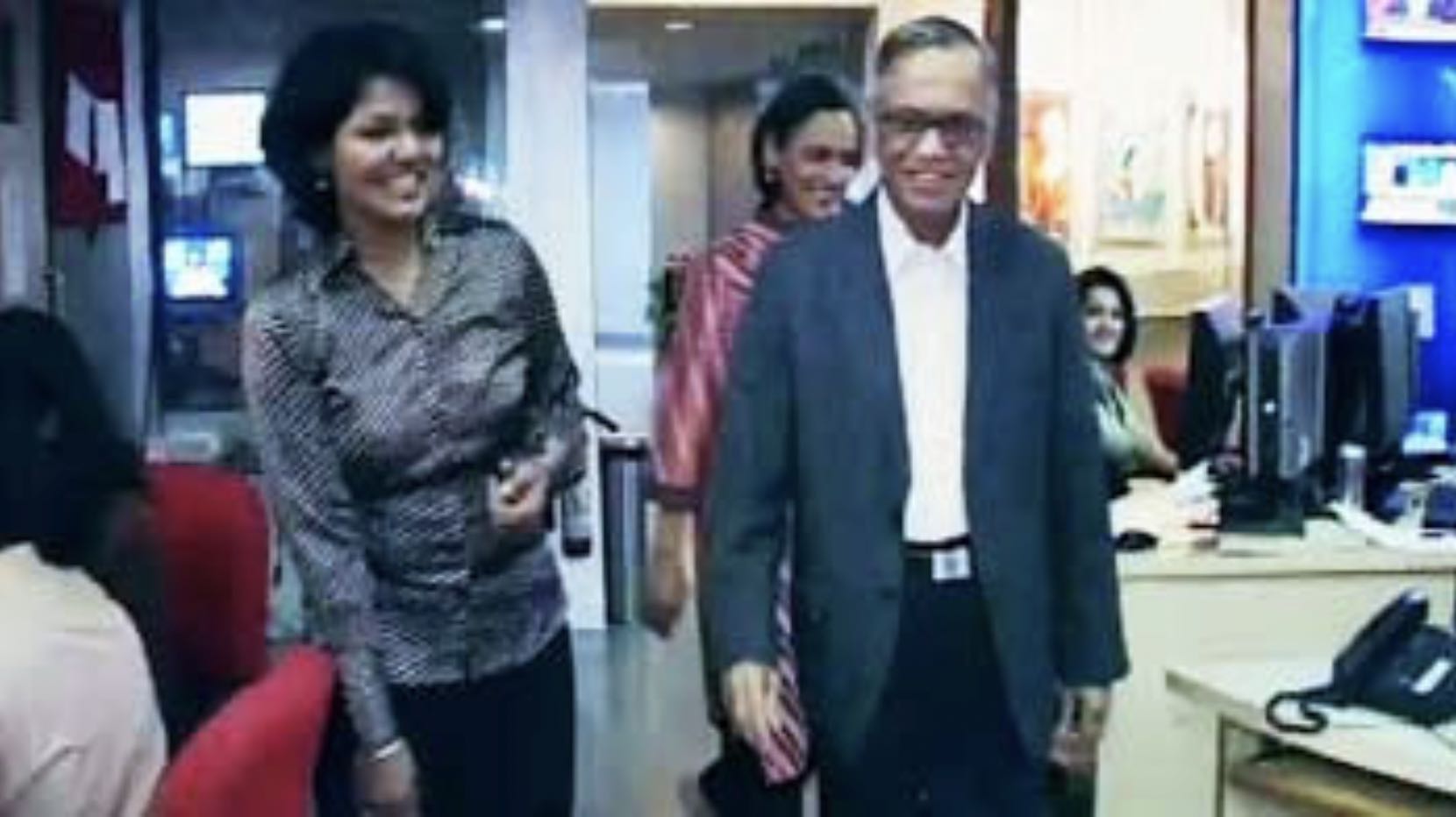


 Voters also made history in electing as vice president Kamala Devi Harris, 56, a senator from California and daughter of Jamaican and Indian immigrants who will become the country’s first woman, first Black person and first Asian American to hold the No. 2 job.In a prime-time speech to flag-waving supporters outside the Chase Center in Wilmington, Biden made no mention of Trump’s intransigence, instead offering an olive branch to the president’s supporters and imploring all Americans to “put away the harsh rhetoric” and end “this grim era of demonization.”
Voters also made history in electing as vice president Kamala Devi Harris, 56, a senator from California and daughter of Jamaican and Indian immigrants who will become the country’s first woman, first Black person and first Asian American to hold the No. 2 job.In a prime-time speech to flag-waving supporters outside the Chase Center in Wilmington, Biden made no mention of Trump’s intransigence, instead offering an olive branch to the president’s supporters and imploring all Americans to “put away the harsh rhetoric” and end “this grim era of demonization.”
 The team also includes a physician on the frontlines of the COVID-19 response, Dr. Robert Rodriguez, a professor at University of California, San Francisco. And the board is rounded out by former government advisors such as Dr. Ezekiel Emanuel, chair of medical ethics and health policy at the University of Pennsylvania, who has advised the White House Office of Management and Budget and the National Institutes of Health; Dr. Atul Gawande, professor at Brigham and women’s Hospital and Harvard Medical School, who advised the Department of Health and Human Services during the Clinton Administration; Dr. Julie Morita, executive vice president of the Robert Wood Johnson Foundation who served on the CDC’s immunization advisory committee; and Dr. Eric Goosby, a professor at University of California San Francisco who served as the U.S. Global AIDS Coordinator and Special Envoy for tuberculosis for the U.N. Secretary General; as well as state public-health experts such as Dr. Celine Gounder, a professor at NYU Grossman School of Medicine who served in the New York City Department of Health and Mental Hygiene, and Dr. Michael Osterholm, director of the center for infectious disease research and policy at the University of Minnesota who worked in the Minnesota Department of Health as an epidemiologist.
The team also includes a physician on the frontlines of the COVID-19 response, Dr. Robert Rodriguez, a professor at University of California, San Francisco. And the board is rounded out by former government advisors such as Dr. Ezekiel Emanuel, chair of medical ethics and health policy at the University of Pennsylvania, who has advised the White House Office of Management and Budget and the National Institutes of Health; Dr. Atul Gawande, professor at Brigham and women’s Hospital and Harvard Medical School, who advised the Department of Health and Human Services during the Clinton Administration; Dr. Julie Morita, executive vice president of the Robert Wood Johnson Foundation who served on the CDC’s immunization advisory committee; and Dr. Eric Goosby, a professor at University of California San Francisco who served as the U.S. Global AIDS Coordinator and Special Envoy for tuberculosis for the U.N. Secretary General; as well as state public-health experts such as Dr. Celine Gounder, a professor at NYU Grossman School of Medicine who served in the New York City Department of Health and Mental Hygiene, and Dr. Michael Osterholm, director of the center for infectious disease research and policy at the University of Minnesota who worked in the Minnesota Department of Health as an epidemiologist.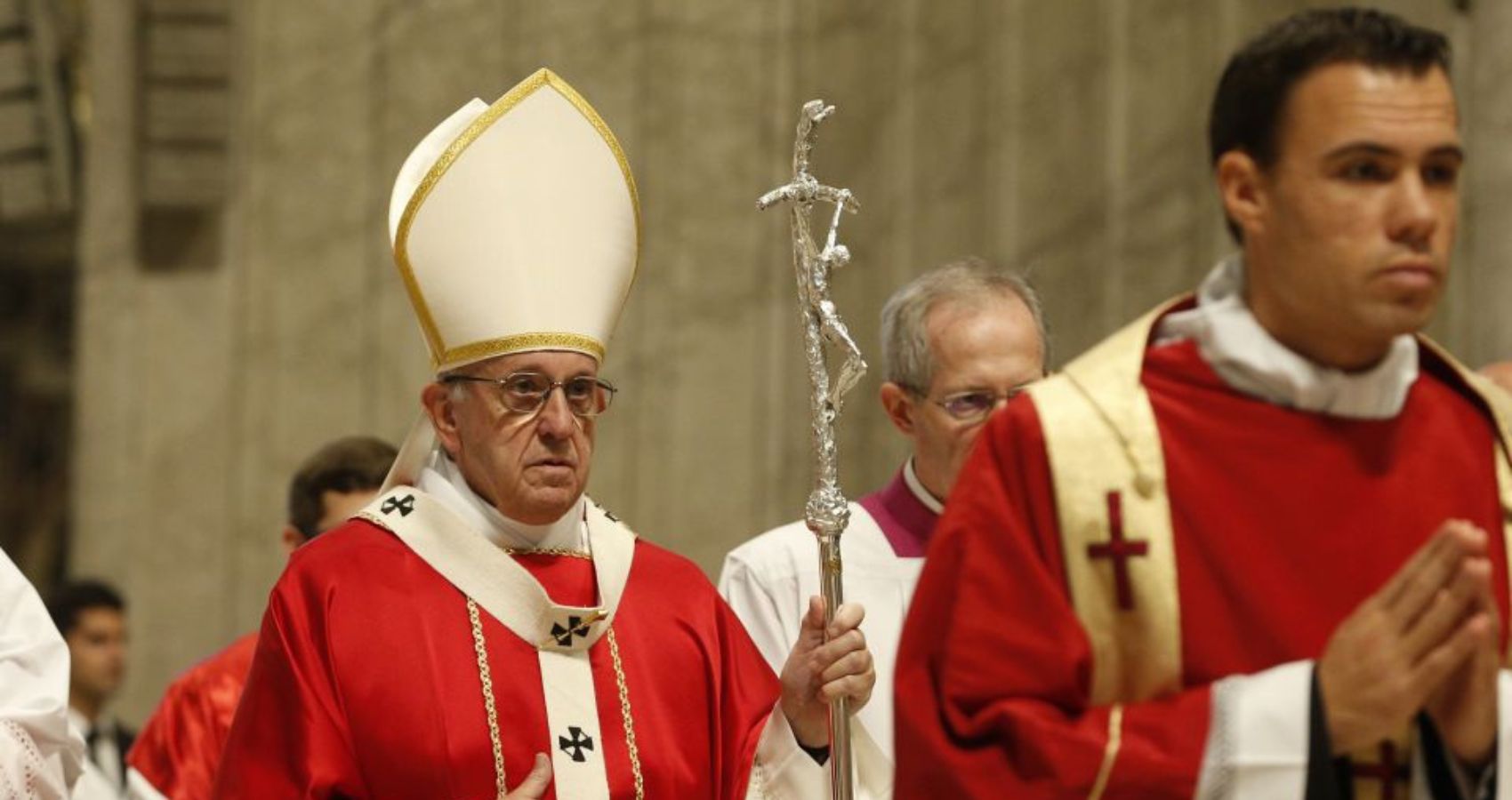

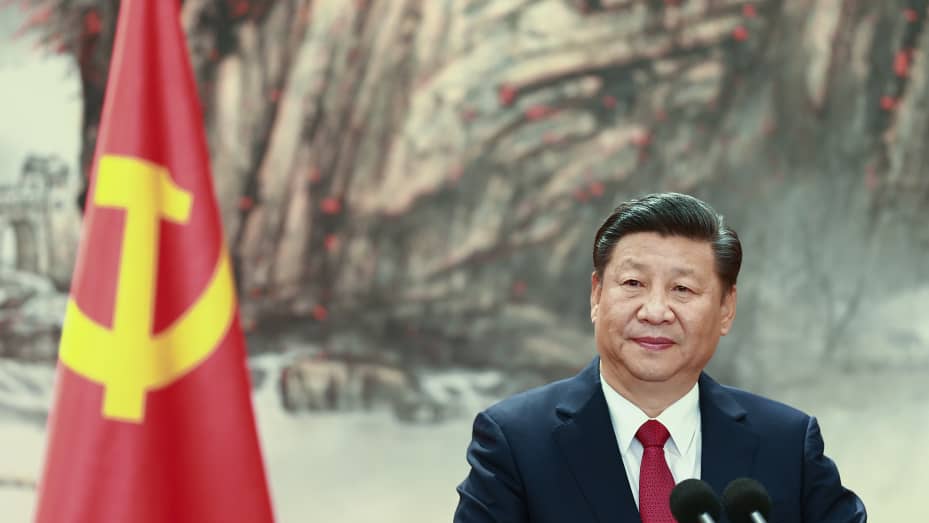
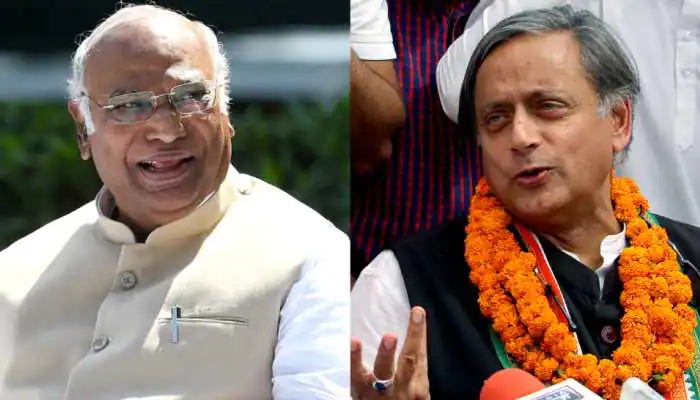
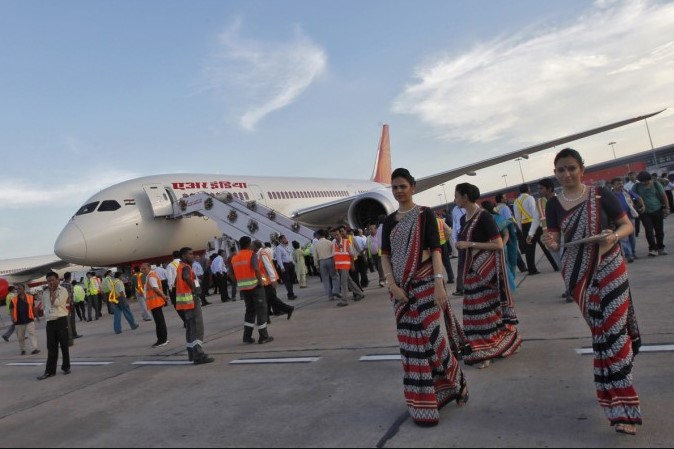
 The greater New York area is home to some 717,000 Indian citizens, according to the
The greater New York area is home to some 717,000 Indian citizens, according to the 




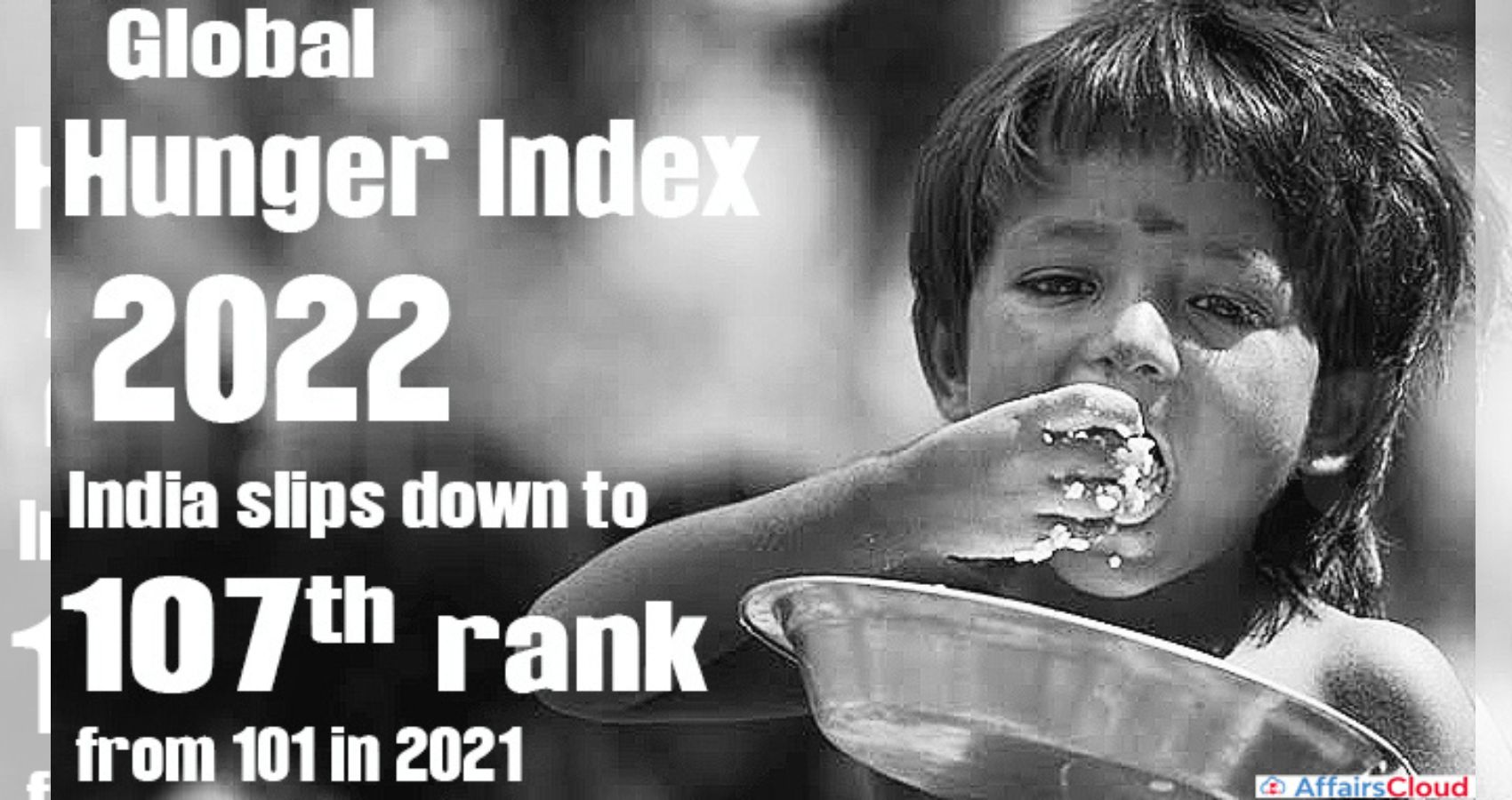
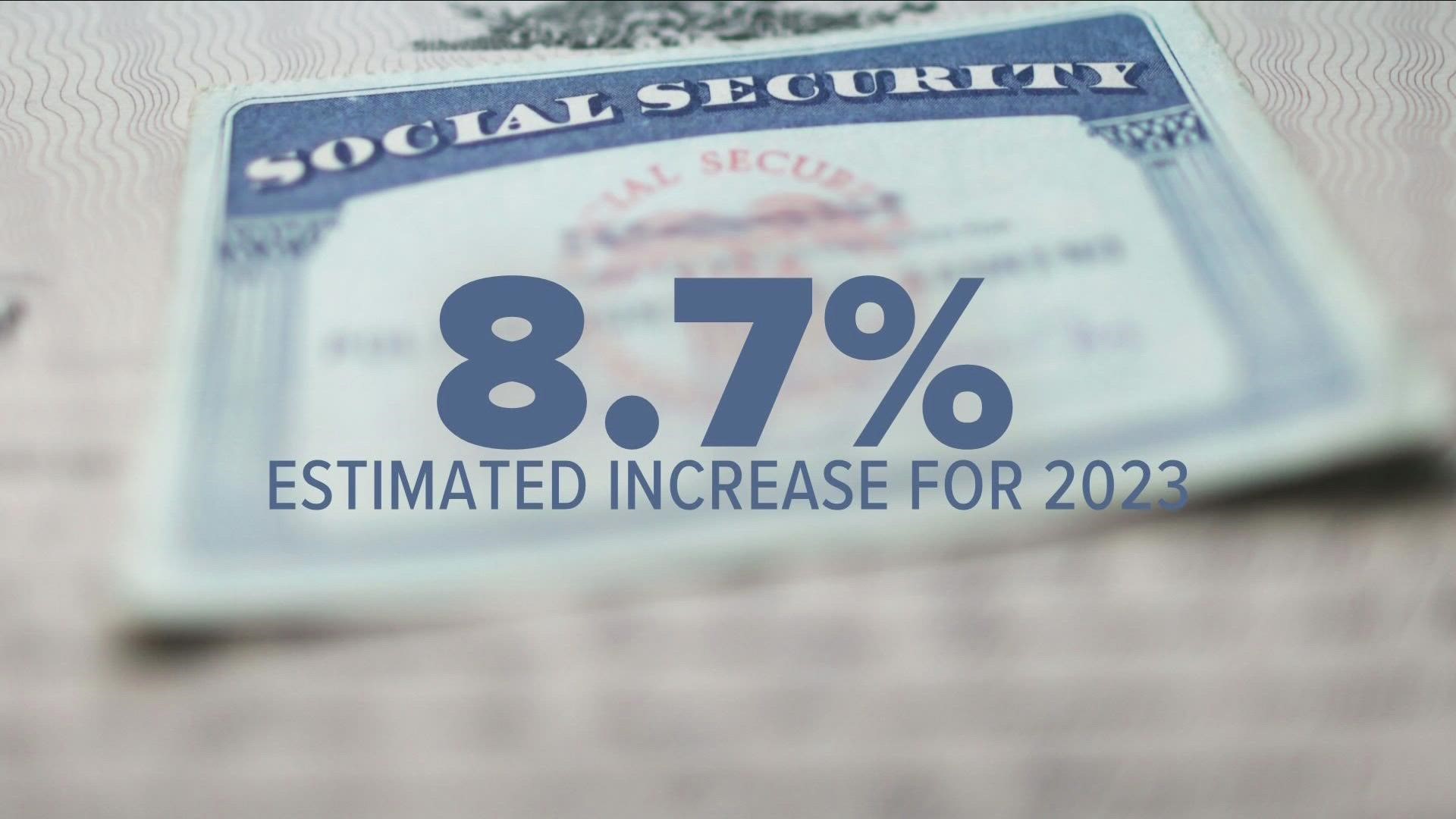
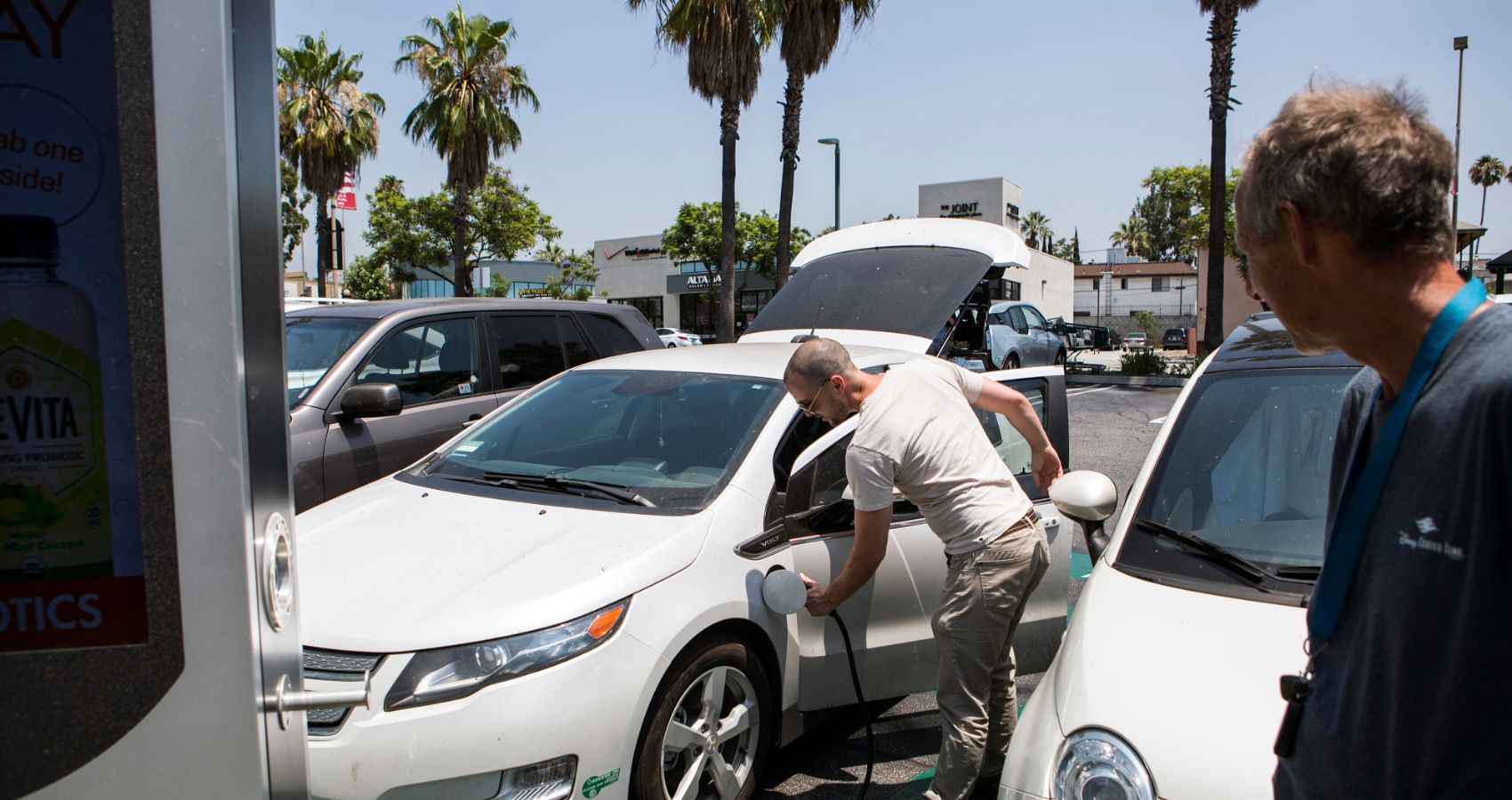
 “We are proud of Dr. Vivek Murthy and his many accomplishments and look forward to supporting him throughout the process, as the nation and the entire world seeks to find best possible solutions to tackle the pandemic that has taken the lives of over a million people around the world and nearly 240,000 in the US alone,” said Dr. Anupama Gotimukula, President-Elect of AAPI, that represents over 100,000 physicians of Indian origin in the United States. Dr. Ravi Kolli, Vice President of AAPI, stated that with Dr. Murthy leading the Task Force on the pandemic, he is “looking forward to bringing the experience and perspective of real experts and doctors to the table. His ethics, quiet leadership style and impeccable credentials make him the smart choice for this leadership role.” “Dr. Vivek Murthy represents the next generation of Indian American physicians,” Dr. Amith Chakrabarty, Secretary of AAPI said. “Dr. Murthy was America’s youngest-ever top doctor, and he was also the first surgeon general of Indian-American descent, when appointed by President Barack Obama in 2014.” “Dr. Vivek Murthy’s appointment to the Task Force brings new energy in the fight against Covid-19. We at AAPI, look forward to working closely with Dr. Murthy and his team to end this deadly pandemic,” said Dr. Satheesh Kathula, Treasurer of AAPI. Murthy, 43, who served as the 19th Surgeon General of the United States during Obama Administration from December 2014 to April 2017, said Americans need a leader who works with the people for the progress of the country. Dr. Murthy’s commitment to medicine and health began early in life. The son of immigrants from India, he discovered the art of healing watching his parents – Hallegere and Myetriae Murthy – treat patients like family in his father’s medical clinic in Miami, Florida. Indian American Doctors have lobbied earnestly to have Dr. Murthy confirmed as the US Surgeon General under Obama administration. “The feeling of de ja vu was pervasive, of a triumph over injustice with a hard fought battle by the Indian community during his confirmation, with AAPI playing a major role that secured the prize of the highest position occupied by an Indian American, and that too by one from our second generation,” said Dr. Jahagirdar, who had led a delegation of AAPI leaders to be at the historic oath taking ceremony of Dr. Vivek Murthy as the US Surgeon General at Fort Myer in Virginia across from Washington DC on Wednesday, April 22, 2015. “The oath ceremony, a proud moment for Indian Americans, was led by Joseph Biden, Vice President and currently President-Elect, held in a large hall like a school stadium, with flags in abundance rigged in from the ceiling and leaning in from the sidewalls,” recalls Dr. Suresh Reddy, the immediate past President of AAPI, who was present at the oath ceremony in the nation’s capital. “I am proud of our community of Indian physicians for all the progress that we have made over the years, and I know that AAPI has been a critical force in making this process possible. The advice you shared and assistance you kindly offered were important pieces of this journey,” Dr. Vivek Murthy, stated in a letter to Dr. Jayesh B. Shah, a past president of AAPI, who along with AAPI’s Legislative Affairs Chair, Dr. Sampat Shivangi and several others had led several delegations to US Senators, lobbying for his confirmation. For more information about AAPI, please visit:
“We are proud of Dr. Vivek Murthy and his many accomplishments and look forward to supporting him throughout the process, as the nation and the entire world seeks to find best possible solutions to tackle the pandemic that has taken the lives of over a million people around the world and nearly 240,000 in the US alone,” said Dr. Anupama Gotimukula, President-Elect of AAPI, that represents over 100,000 physicians of Indian origin in the United States. Dr. Ravi Kolli, Vice President of AAPI, stated that with Dr. Murthy leading the Task Force on the pandemic, he is “looking forward to bringing the experience and perspective of real experts and doctors to the table. His ethics, quiet leadership style and impeccable credentials make him the smart choice for this leadership role.” “Dr. Vivek Murthy represents the next generation of Indian American physicians,” Dr. Amith Chakrabarty, Secretary of AAPI said. “Dr. Murthy was America’s youngest-ever top doctor, and he was also the first surgeon general of Indian-American descent, when appointed by President Barack Obama in 2014.” “Dr. Vivek Murthy’s appointment to the Task Force brings new energy in the fight against Covid-19. We at AAPI, look forward to working closely with Dr. Murthy and his team to end this deadly pandemic,” said Dr. Satheesh Kathula, Treasurer of AAPI. Murthy, 43, who served as the 19th Surgeon General of the United States during Obama Administration from December 2014 to April 2017, said Americans need a leader who works with the people for the progress of the country. Dr. Murthy’s commitment to medicine and health began early in life. The son of immigrants from India, he discovered the art of healing watching his parents – Hallegere and Myetriae Murthy – treat patients like family in his father’s medical clinic in Miami, Florida. Indian American Doctors have lobbied earnestly to have Dr. Murthy confirmed as the US Surgeon General under Obama administration. “The feeling of de ja vu was pervasive, of a triumph over injustice with a hard fought battle by the Indian community during his confirmation, with AAPI playing a major role that secured the prize of the highest position occupied by an Indian American, and that too by one from our second generation,” said Dr. Jahagirdar, who had led a delegation of AAPI leaders to be at the historic oath taking ceremony of Dr. Vivek Murthy as the US Surgeon General at Fort Myer in Virginia across from Washington DC on Wednesday, April 22, 2015. “The oath ceremony, a proud moment for Indian Americans, was led by Joseph Biden, Vice President and currently President-Elect, held in a large hall like a school stadium, with flags in abundance rigged in from the ceiling and leaning in from the sidewalls,” recalls Dr. Suresh Reddy, the immediate past President of AAPI, who was present at the oath ceremony in the nation’s capital. “I am proud of our community of Indian physicians for all the progress that we have made over the years, and I know that AAPI has been a critical force in making this process possible. The advice you shared and assistance you kindly offered were important pieces of this journey,” Dr. Vivek Murthy, stated in a letter to Dr. Jayesh B. Shah, a past president of AAPI, who along with AAPI’s Legislative Affairs Chair, Dr. Sampat Shivangi and several others had led several delegations to US Senators, lobbying for his confirmation. For more information about AAPI, please visit: 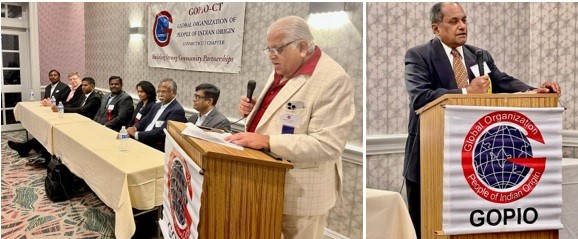

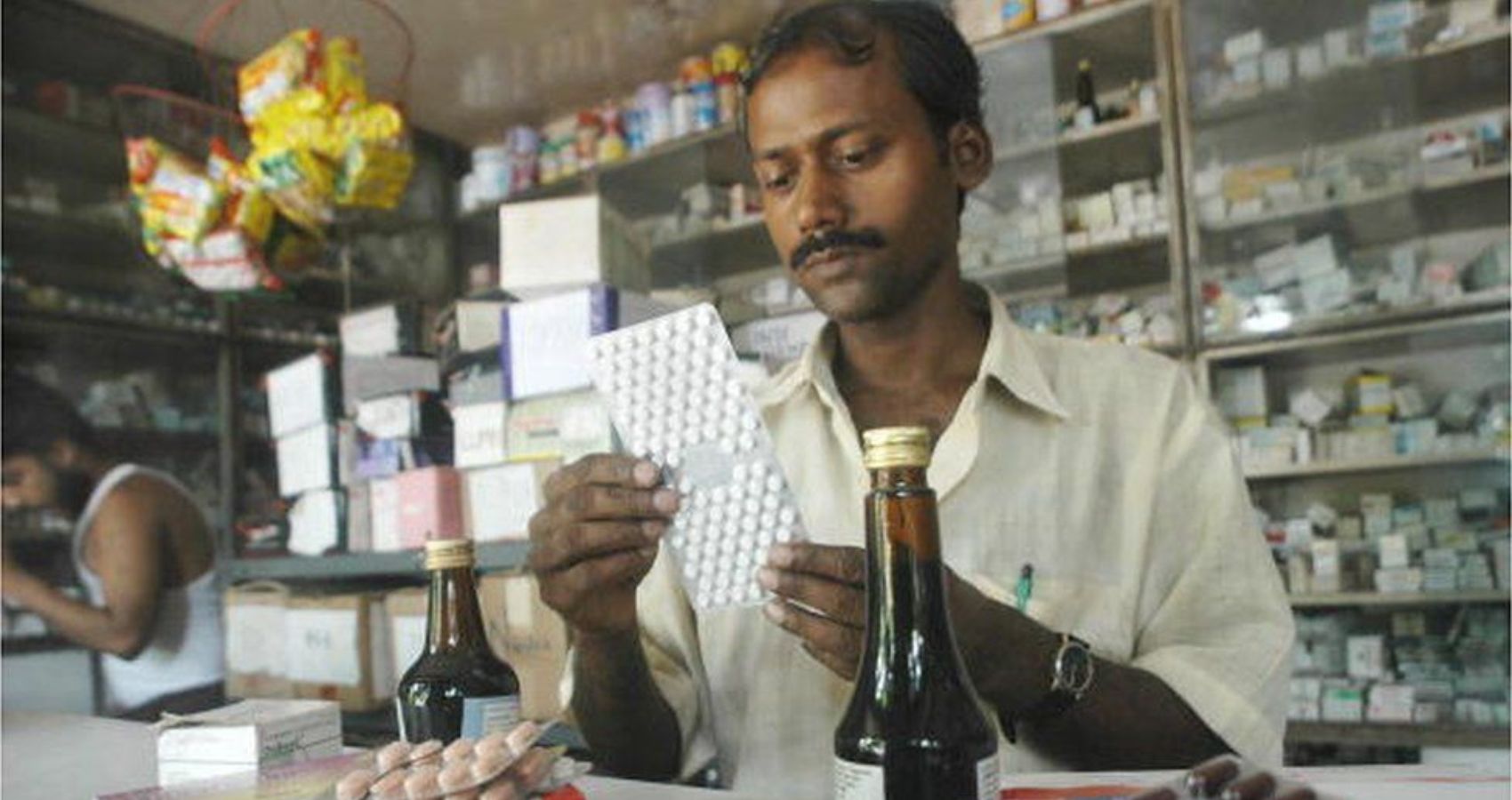
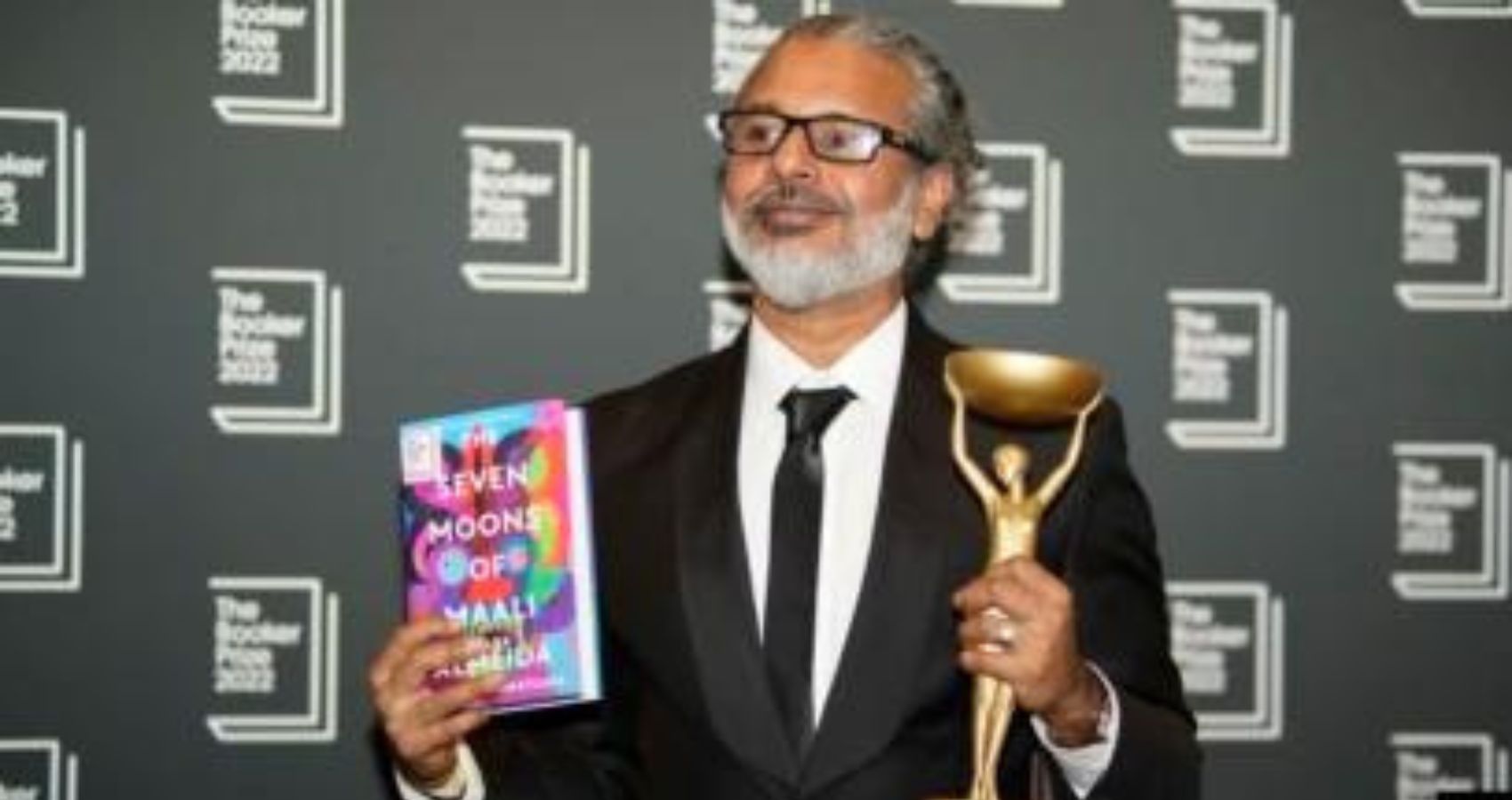

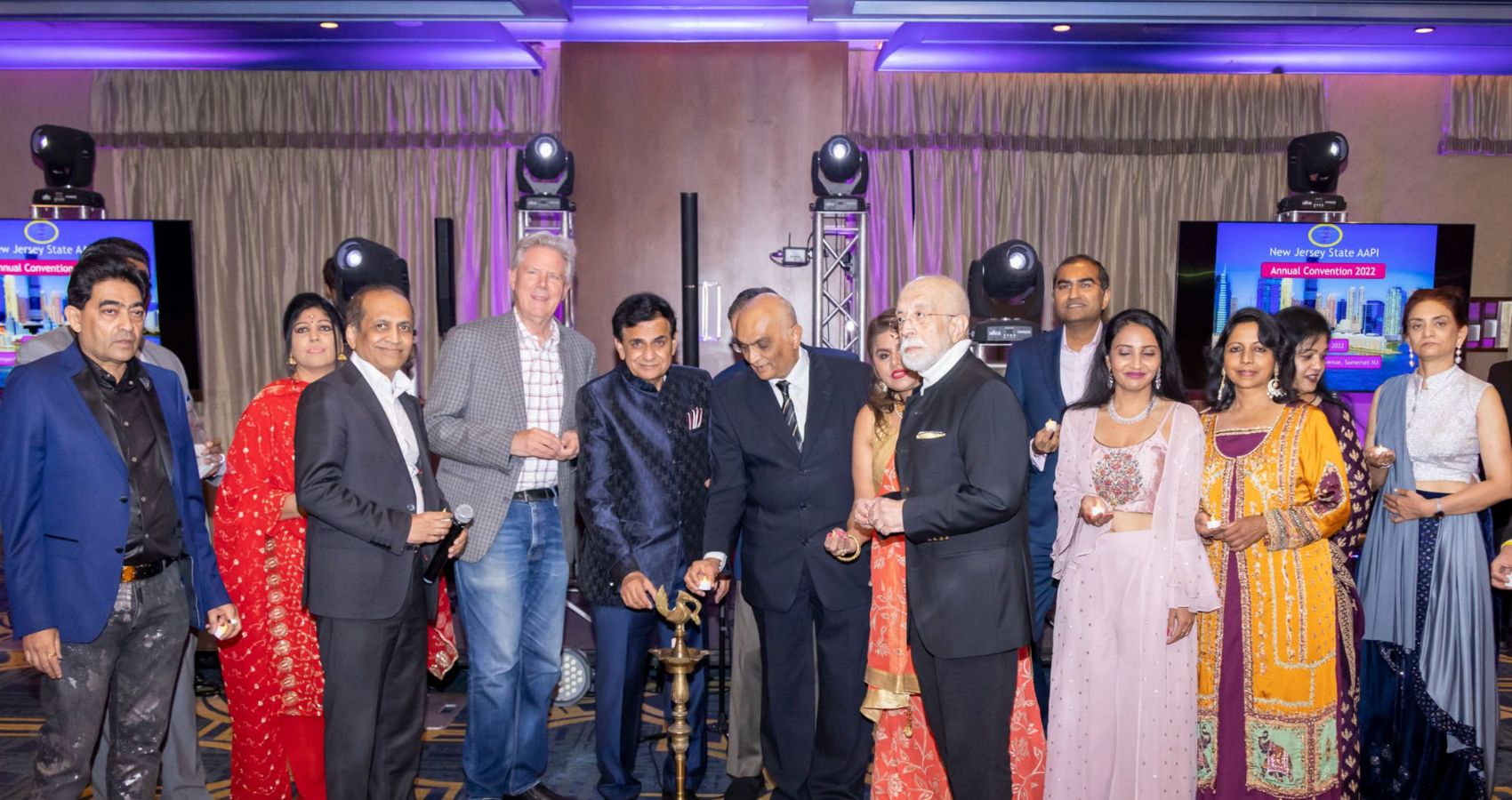
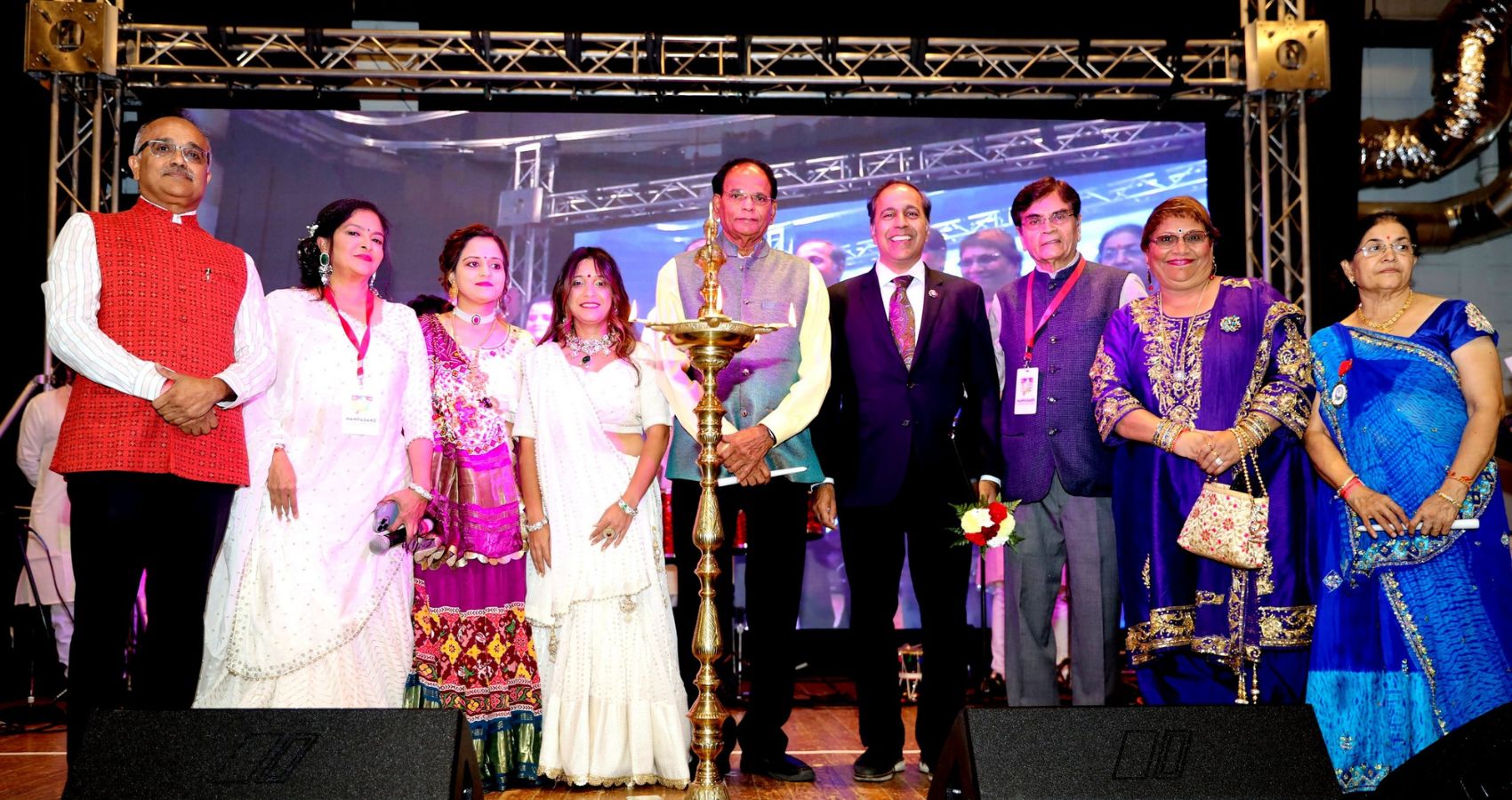



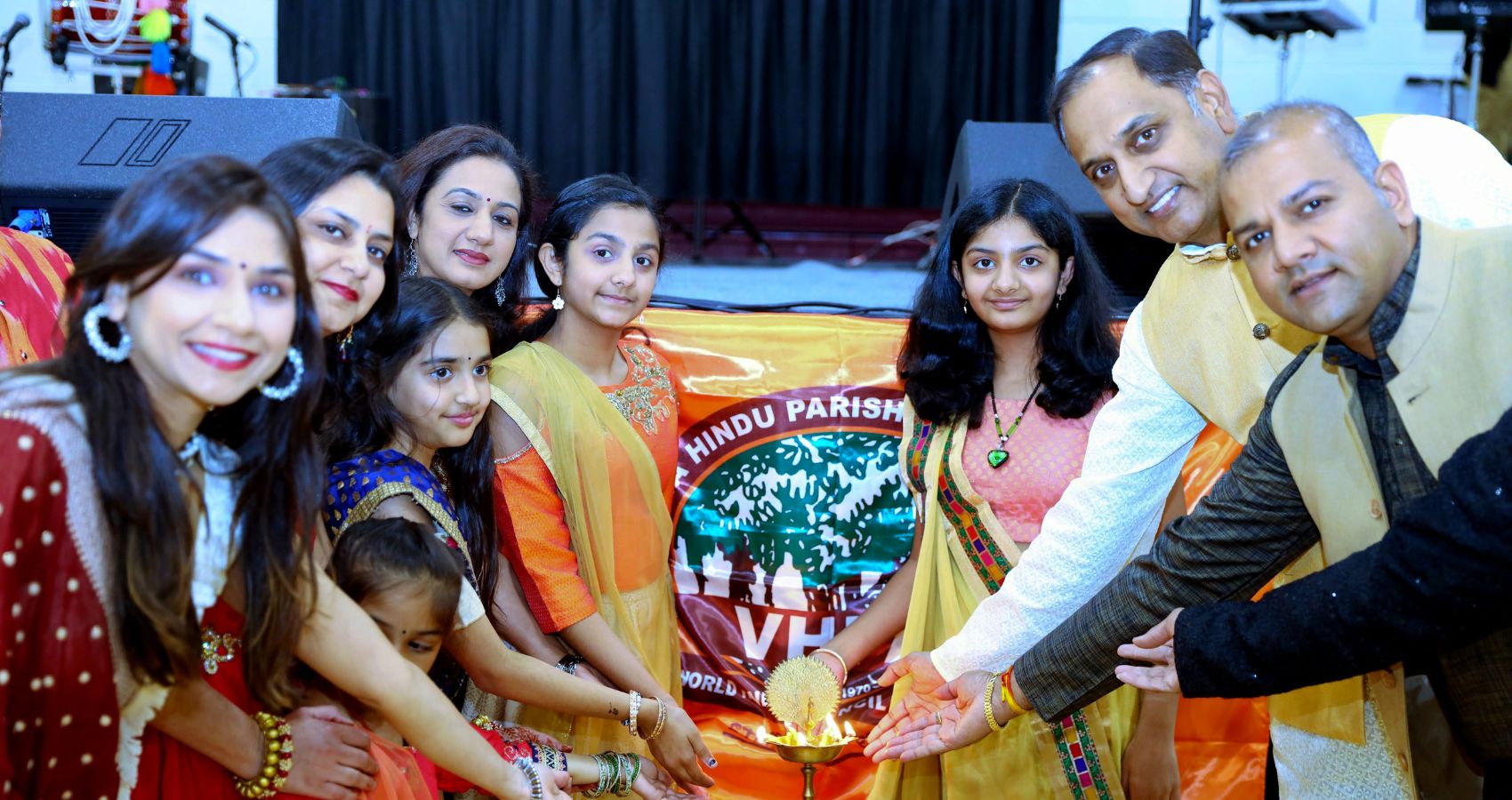
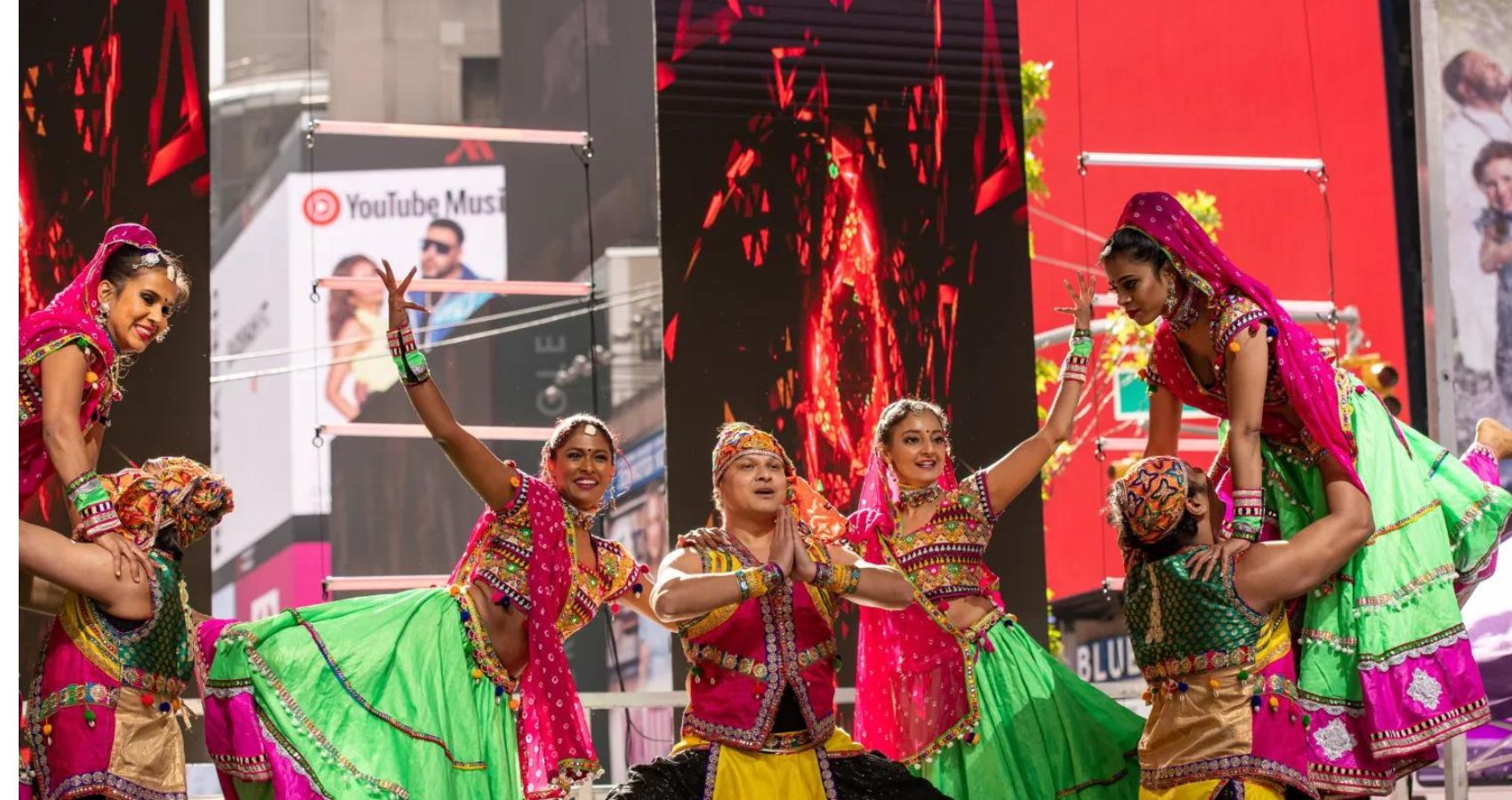



 How to make- First, to make the black sesame brittle, heat 1/4 cup brown sugar under low flame in a sauce pan and add the sesame seeds when the sugar is fully melted. Turn off the heat when the sugar reaches sticky caramel consistency. Pour onto a greased tray and flatten it out so that it cools down to a breakable brittle mass. Mix the hot water with half cup brown sugar and stir it slowly under low flame just to the point when the sugar has completely dissolved. Turn off the heat and let it cool. Add the cooled down sugar mixture, vanilla, coconut cream, cashews and matcha to a blender/mixer jar and process it on medium power until it becomes fluffy and creamy with no lumps or bits of cashews left. Chill this in the refrigerator for 1-2 hours. Break your brittle mass into small bits.Churn it in your ice cream maker for 15 minutes and fold in the brittle bits.Transfer this into your ice cream tub and sprinkle some sesame brittle bits on top.Freeze it for ~1-2 hours- until ready to scoop out and serve. Notes, Tips and Suggestions– . You could create your own favourite flavours of ice cream by omitting matcha and adding in other substitutes like strawberry compote, chocolate etc. But I highly recommend you to try this flavour! . The consistency of the ice cream depends on the cashews and coconut milk. So make sure you follow the ratios right.
How to make- First, to make the black sesame brittle, heat 1/4 cup brown sugar under low flame in a sauce pan and add the sesame seeds when the sugar is fully melted. Turn off the heat when the sugar reaches sticky caramel consistency. Pour onto a greased tray and flatten it out so that it cools down to a breakable brittle mass. Mix the hot water with half cup brown sugar and stir it slowly under low flame just to the point when the sugar has completely dissolved. Turn off the heat and let it cool. Add the cooled down sugar mixture, vanilla, coconut cream, cashews and matcha to a blender/mixer jar and process it on medium power until it becomes fluffy and creamy with no lumps or bits of cashews left. Chill this in the refrigerator for 1-2 hours. Break your brittle mass into small bits.Churn it in your ice cream maker for 15 minutes and fold in the brittle bits.Transfer this into your ice cream tub and sprinkle some sesame brittle bits on top.Freeze it for ~1-2 hours- until ready to scoop out and serve. Notes, Tips and Suggestions– . You could create your own favourite flavours of ice cream by omitting matcha and adding in other substitutes like strawberry compote, chocolate etc. But I highly recommend you to try this flavour! . The consistency of the ice cream depends on the cashews and coconut milk. So make sure you follow the ratios right. Dr. Sudhakar Jonnalgadda said this is first time in AAPI history in Association with AHA observe the world restart Heart Day. It’s a total commitment to the joint efforts by AAPI and AHA. “I am very impressed with the energy and strength of the leaders who have taken upon themselves this noble task on creating awareness and educating the physicians and the public on this very serious disease, especially among South Asians in the US. We have the talents, skills, strength and the commitment. Let’s put them to work and help our brethren.”
Dr. Sudhakar Jonnalgadda said this is first time in AAPI history in Association with AHA observe the world restart Heart Day. It’s a total commitment to the joint efforts by AAPI and AHA. “I am very impressed with the energy and strength of the leaders who have taken upon themselves this noble task on creating awareness and educating the physicians and the public on this very serious disease, especially among South Asians in the US. We have the talents, skills, strength and the commitment. Let’s put them to work and help our brethren.” Dr. Brahma Sharma, a prominent cardiologist, serving as the Chair of the AAPI And AHA Liason Committee on South Asians CVD, said, “For too long, we South Asians have silently suffered from senseless premature death of our loved ones from cardiac arrests in our homes but no more , we have to be proactive so Under this historic AAPI – AHA alliance , we plan to take this initiative of Hands only CPR” to every household so we can feel comfortable to pitch in and rescue these previous lives in first few minutes before help arrives “
Dr. Brahma Sharma, a prominent cardiologist, serving as the Chair of the AAPI And AHA Liason Committee on South Asians CVD, said, “For too long, we South Asians have silently suffered from senseless premature death of our loved ones from cardiac arrests in our homes but no more , we have to be proactive so Under this historic AAPI – AHA alliance , we plan to take this initiative of Hands only CPR” to every household so we can feel comfortable to pitch in and rescue these previous lives in first few minutes before help arrives “ During the event, AAPI stressed the importance of Hands Only CPR for bystanders and immediately rescue lives and reduce “Out of Hospital Cardiac Arrests. A Hands on only CPR demonstration was led by Dr. Anupama Gotimukula, President-Elect of AAPI. “Every family member needs to know how to do “Hands Only CPR” to save a life from sudden Cardiac Arrest!” It’s a day to commemorate the importance of Anesthesia specialty in the medical field with which we are able to make wonders in the medical field, especially the surgical specialties and able to do all complex surgeries successfully today!!
During the event, AAPI stressed the importance of Hands Only CPR for bystanders and immediately rescue lives and reduce “Out of Hospital Cardiac Arrests. A Hands on only CPR demonstration was led by Dr. Anupama Gotimukula, President-Elect of AAPI. “Every family member needs to know how to do “Hands Only CPR” to save a life from sudden Cardiac Arrest!” It’s a day to commemorate the importance of Anesthesia specialty in the medical field with which we are able to make wonders in the medical field, especially the surgical specialties and able to do all complex surgeries successfully today!! Featuring user-generated content from campaign staff, supporters and others, the ad will run on Youtube and Facebook in nine battleground states including Arizona, Florida, Michigan, Minnesota, Nevada, North Carolina, Pennsylvania, Virginia, and Wisconsin.“English is not the primary language for many eligible AAPI voters, so we wanted to speak with them respectfully in their mother tongue,” said Yena Oh, Biden for President Senior Video Editor and Korean-American. “We know how important it is to resonate and engage with our own community where they are — across different platforms using multiple languages.”
Featuring user-generated content from campaign staff, supporters and others, the ad will run on Youtube and Facebook in nine battleground states including Arizona, Florida, Michigan, Minnesota, Nevada, North Carolina, Pennsylvania, Virginia, and Wisconsin.“English is not the primary language for many eligible AAPI voters, so we wanted to speak with them respectfully in their mother tongue,” said Yena Oh, Biden for President Senior Video Editor and Korean-American. “We know how important it is to resonate and engage with our own community where they are — across different platforms using multiple languages.”

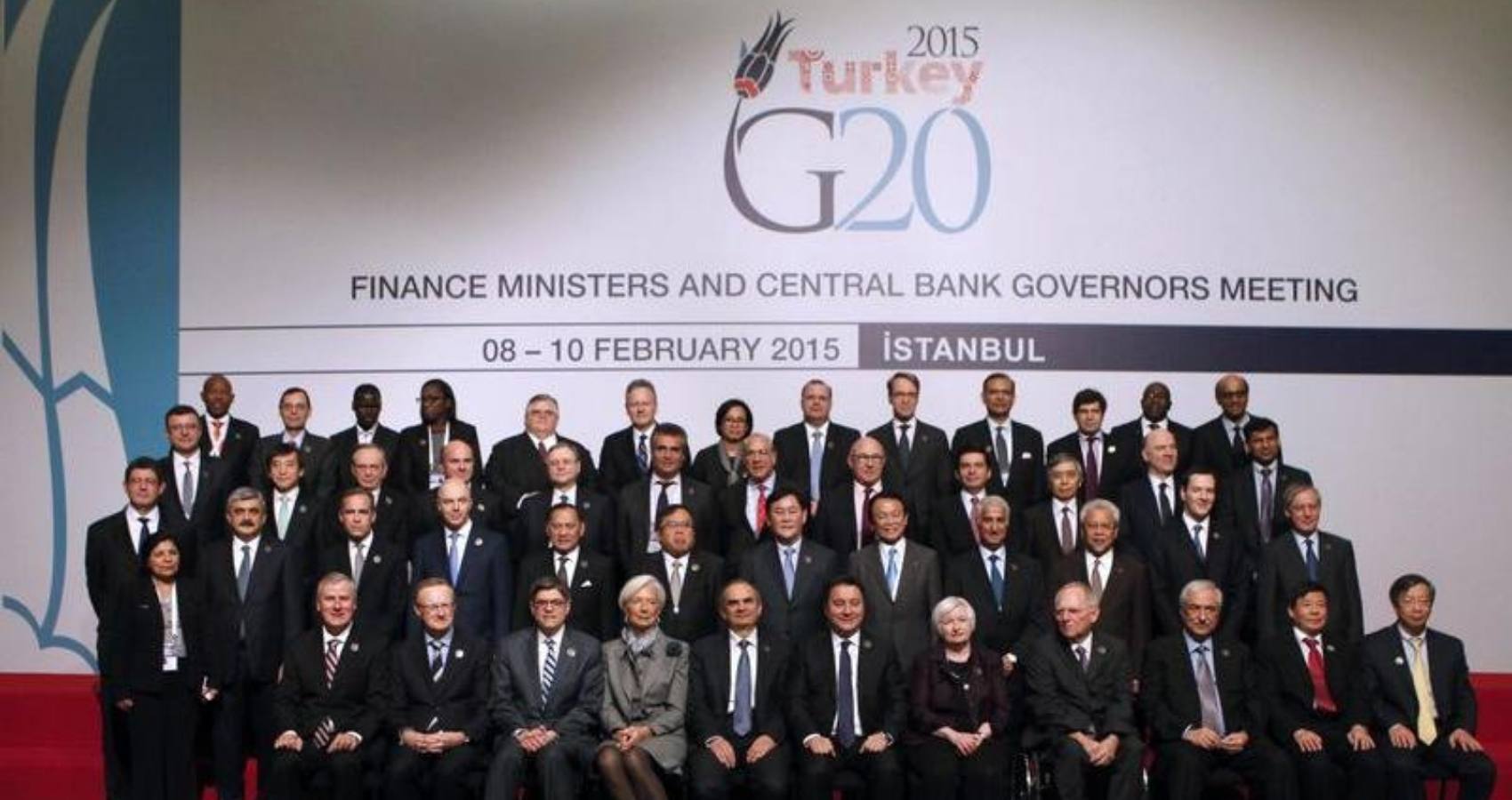
 What you’ll need- For the chicken satay- 500g Chicken thighs, cut into bite-sized pieces Half a teaspoon of turmeric powder1.5 teaspoons yellow curry powder (refer notes)2 teaspoons of brown sugar or palm sugar 1 teaspoon minced garlic 1 teaspoon grated ginger Half a tablespoon of fish sauce 2 tablespoons of coconut milk 1 tablespoon soy sauce Half a tablespoon of peanut oil or canola oilSalt and pepper as required Water-soaked wooden skewers For the creamy chilli peanut dip- 1.5 tablespoons creamy peanut butter Half a teaspoon of grated ginger Half a teaspoon of minced garlic1 teaspoon of brown sugar or palm sugar1 teaspoon of lime juice Half a tablespoon of roasted peanuts Half a tablespoon of soy sauce Half of a red Thai chilli or 1 teaspoon red chilli flakes 1 tablespoon coconut milk
What you’ll need- For the chicken satay- 500g Chicken thighs, cut into bite-sized pieces Half a teaspoon of turmeric powder1.5 teaspoons yellow curry powder (refer notes)2 teaspoons of brown sugar or palm sugar 1 teaspoon minced garlic 1 teaspoon grated ginger Half a tablespoon of fish sauce 2 tablespoons of coconut milk 1 tablespoon soy sauce Half a tablespoon of peanut oil or canola oilSalt and pepper as required Water-soaked wooden skewers For the creamy chilli peanut dip- 1.5 tablespoons creamy peanut butter Half a teaspoon of grated ginger Half a teaspoon of minced garlic1 teaspoon of brown sugar or palm sugar1 teaspoon of lime juice Half a tablespoon of roasted peanuts Half a tablespoon of soy sauce Half of a red Thai chilli or 1 teaspoon red chilli flakes 1 tablespoon coconut milk  How to make- Marinate the chicken pieces in the ingredients listed below the marinade list from atleast 20 minutes to overnight(refrigerated).Grill them skewered onto pre-soaked wooden sticks, preferably on a girdle over heated charcoal or on a heat girdle-pan, for 5 minutes each on all sides. Pulse the ingredients listed for the dip, until well combined and of right consistency. Notes, tips and suggestions- . Serve your hot chicken skewers alongside some lime wedges and the prepared dip garnished with crushed peanuts and coriander leaves.. If you want your dip to be more towards the runnier side, add a tablespoon more of coconut milk into it .. If you can’t find yellow curry powder in your pantry, you could make your own easily by mixing up the following: half a tablespoon ground coriander seeds, three quarters of a teaspoon of cumin powder, half a teaspoon of turmeric powder, a quarter teaspoon of ground black pepper, a quarter teaspoon of chilli powder and a quarter teaspoon of ground ginger.
How to make- Marinate the chicken pieces in the ingredients listed below the marinade list from atleast 20 minutes to overnight(refrigerated).Grill them skewered onto pre-soaked wooden sticks, preferably on a girdle over heated charcoal or on a heat girdle-pan, for 5 minutes each on all sides. Pulse the ingredients listed for the dip, until well combined and of right consistency. Notes, tips and suggestions- . Serve your hot chicken skewers alongside some lime wedges and the prepared dip garnished with crushed peanuts and coriander leaves.. If you want your dip to be more towards the runnier side, add a tablespoon more of coconut milk into it .. If you can’t find yellow curry powder in your pantry, you could make your own easily by mixing up the following: half a tablespoon ground coriander seeds, three quarters of a teaspoon of cumin powder, half a teaspoon of turmeric powder, a quarter teaspoon of ground black pepper, a quarter teaspoon of chilli powder and a quarter teaspoon of ground ginger.
 The participants eloquently and with anecdotes discussed in detail on the differencing policies and perspectives of the Democratic Party candidate Joe Biden and that of the Republican Party, President Trump on the Covid-19 Pandemic, Healthcare Policy and the Affordable care Act, the US Economy, US relationship with India and the rest of the world, with a particular focus on the UN and WHO, Immigration System, Work Visas, and the Indian Americans Awaiting for decades for Green Card approval, and the policies and programs by both the parties on Climate Change. Advocating strongly for the Biden –Harris Ticket, Sujata Gadkar-Wilcox argued that, “As a nation, we are more deeply divided in some ways than we have ever been. We are in need of a leader who will bring us together rather than increase polarization. The rising number of former Republican officials and leading Democrats who support Vice President Biden speaks for itself. Joe Biden is the right kind of unifying candidate–a centrist candidate with the experience to do the job, the ability to rebuild our relationships domestically and abroad, and the leadership to help the United States successfully emerge from the global pandemic.”
The participants eloquently and with anecdotes discussed in detail on the differencing policies and perspectives of the Democratic Party candidate Joe Biden and that of the Republican Party, President Trump on the Covid-19 Pandemic, Healthcare Policy and the Affordable care Act, the US Economy, US relationship with India and the rest of the world, with a particular focus on the UN and WHO, Immigration System, Work Visas, and the Indian Americans Awaiting for decades for Green Card approval, and the policies and programs by both the parties on Climate Change. Advocating strongly for the Biden –Harris Ticket, Sujata Gadkar-Wilcox argued that, “As a nation, we are more deeply divided in some ways than we have ever been. We are in need of a leader who will bring us together rather than increase polarization. The rising number of former Republican officials and leading Democrats who support Vice President Biden speaks for itself. Joe Biden is the right kind of unifying candidate–a centrist candidate with the experience to do the job, the ability to rebuild our relationships domestically and abroad, and the leadership to help the United States successfully emerge from the global pandemic.”  Anil Bansal made a strong pitch for Joe Biden and Kamala Harris. Stating that Americans face an epic choice of this election, he said, “Our decency and democracy are at stake. When the president starts behaving like a king, fuels racism and division, and destroys science, we must wake up. Trump has clearly shown in the last four years that he is incompetent and selfish. Mr. Trump lies and cheats and mocks everyone who does not agree with him. Whereas Mr. Biden is a proven leader who is most decent, builds confidence and consensus, and believes in serving the country and its people.” He concluded his argument for the Democratic Party Ticket, Bansal argued that “We owe to our children and future generations to use the power given today and vote for stability, democracy, and bring back the soul of the nation.”
Anil Bansal made a strong pitch for Joe Biden and Kamala Harris. Stating that Americans face an epic choice of this election, he said, “Our decency and democracy are at stake. When the president starts behaving like a king, fuels racism and division, and destroys science, we must wake up. Trump has clearly shown in the last four years that he is incompetent and selfish. Mr. Trump lies and cheats and mocks everyone who does not agree with him. Whereas Mr. Biden is a proven leader who is most decent, builds confidence and consensus, and believes in serving the country and its people.” He concluded his argument for the Democratic Party Ticket, Bansal argued that “We owe to our children and future generations to use the power given today and vote for stability, democracy, and bring back the soul of the nation.”  In her passionate debate as to why Indian Americans should defeat Trump and support Biden & Harris Ticket in 2020, Dr. Hetal Gor said, “In the past four years, Trump’s policies, actions, and words have all been extremely divisive. He has openly supported White supremacist groups, increased racial divide, and wreaked havoc on the social fabric of the nation. His tax cuts have widened the deficit in turn crowding out productive investment and have increased income inequality within the nation. He is unequivocally against a woman’s right to choice. Internationally, Trump has made even our allies turn their back on us. Trump’s policies have revoked India’s special trade status and levied tariffs on India’s imports. He has restricted Visas to Indian immigrants, falsely claimed that India asked the US to intervene in Kashmir, and mediate dispute with China. He has used Prime Minister Modi for his own personal advantage without doing anything constructive for Indians.”
In her passionate debate as to why Indian Americans should defeat Trump and support Biden & Harris Ticket in 2020, Dr. Hetal Gor said, “In the past four years, Trump’s policies, actions, and words have all been extremely divisive. He has openly supported White supremacist groups, increased racial divide, and wreaked havoc on the social fabric of the nation. His tax cuts have widened the deficit in turn crowding out productive investment and have increased income inequality within the nation. He is unequivocally against a woman’s right to choice. Internationally, Trump has made even our allies turn their back on us. Trump’s policies have revoked India’s special trade status and levied tariffs on India’s imports. He has restricted Visas to Indian immigrants, falsely claimed that India asked the US to intervene in Kashmir, and mediate dispute with China. He has used Prime Minister Modi for his own personal advantage without doing anything constructive for Indians.”  In her argument for supporting Biden, Dr. Gor believes that “the Biden/Harris campaign will work together to restore core American values. They would make sure the US is seen as a country of a respect as they would cut down hate crime, protect houses of worship, restore the American Dream, secure our values as a nation that was built by immigrants by working to eliminate language barriers for all. Furthermore, they have and will continue to honor the contributions of Indians, and will create a safe environment for all children. They will preserve strong alliances with our allies, and strengthen US-India relationship, and supporting India’s membership in a reformed and expanded UN Security Council.” Advocating strongly to re-elect President Trump and the Republican Party candidates around the nation, Puneet Ahluwalia said, “This will ensure that our nation stays the course for unprecedented economic growth. Especially after the pandemic, we need strong committed leadership which fulfills its promises to the American people. Our nation’s economy needs a leader who is pro-business and understands the plight of hard working Americans. Biden will increase taxes and regulations which will further stifle the economy and run businesses and manufacturing out of our country. The Democratic Party leadership is purposely stalling the economy with draconian mandates to harm Republicans this election, which are playing with American lives.” On the international front, Ahluwalia argued that “Only President Trump can take on the threats of China, Iran and Russia along with other external threats around the globe. As proud Americans, we value growth, freedom and opportunity. It is for the very same reason, I have chosen to run for Lt. Governor of Virginia.”
In her argument for supporting Biden, Dr. Gor believes that “the Biden/Harris campaign will work together to restore core American values. They would make sure the US is seen as a country of a respect as they would cut down hate crime, protect houses of worship, restore the American Dream, secure our values as a nation that was built by immigrants by working to eliminate language barriers for all. Furthermore, they have and will continue to honor the contributions of Indians, and will create a safe environment for all children. They will preserve strong alliances with our allies, and strengthen US-India relationship, and supporting India’s membership in a reformed and expanded UN Security Council.” Advocating strongly to re-elect President Trump and the Republican Party candidates around the nation, Puneet Ahluwalia said, “This will ensure that our nation stays the course for unprecedented economic growth. Especially after the pandemic, we need strong committed leadership which fulfills its promises to the American people. Our nation’s economy needs a leader who is pro-business and understands the plight of hard working Americans. Biden will increase taxes and regulations which will further stifle the economy and run businesses and manufacturing out of our country. The Democratic Party leadership is purposely stalling the economy with draconian mandates to harm Republicans this election, which are playing with American lives.” On the international front, Ahluwalia argued that “Only President Trump can take on the threats of China, Iran and Russia along with other external threats around the globe. As proud Americans, we value growth, freedom and opportunity. It is for the very same reason, I have chosen to run for Lt. Governor of Virginia.” 
 According to Dr. Sampat Shivangi, historically US Presidents from the Democratic Party have contributed minimally to the cause of India. “It was Bush who signed the US-India civil nuclear treaty, which stands as a major foreign policy milestone of his presidency.” While Joe Biden has questioned the removal of Article 370 and CAA by Modi Government, President Trump has advanced the friendship between Indian and the US and has opposed the Chinese-Pakistani propaganda in the UN Security Council and proceedings against India on Article 370 and CAA. “It is a known fact that Trump and his Secretary of State went out of the way to support India,” he pointed out. “One has to remember Trump’s statement that India now has its best friend in the White House. It is good to have a friend of India in the White House than its adversary. Now, we the Indian Americans should support a friend of India in the November election as our gratitude towards our motherland.”
According to Dr. Sampat Shivangi, historically US Presidents from the Democratic Party have contributed minimally to the cause of India. “It was Bush who signed the US-India civil nuclear treaty, which stands as a major foreign policy milestone of his presidency.” While Joe Biden has questioned the removal of Article 370 and CAA by Modi Government, President Trump has advanced the friendship between Indian and the US and has opposed the Chinese-Pakistani propaganda in the UN Security Council and proceedings against India on Article 370 and CAA. “It is a known fact that Trump and his Secretary of State went out of the way to support India,” he pointed out. “One has to remember Trump’s statement that India now has its best friend in the White House. It is good to have a friend of India in the White House than its adversary. Now, we the Indian Americans should support a friend of India in the November election as our gratitude towards our motherland.” 
 Dr. Anand Tamhankar argued that “This is an once-in-a-lifetime opportunity to make an impact with our votes by helping re-elect President Trump. He has been the most ardent supporter of Modiji’s reforms and the Indian causes, which is in contrast to the open vocal opposition to India and the removal of article 370 and the Citizenship Amendment Act (CAA) by Biden-Harris.” According to him, “Trump is the clear choice if you believe in controlled, legal, merit-based immigration versus mass uncontrolled, vote bank politics-based immigration. A border-less America is unsustainable and a big challenge to the safety and security of citizens as can be seen in Europe and countries with extremely liberal immigration policies in the past. “Trump’s re-election means continued prosperity based on low taxation,responsible and free market capitalism vs Democrat’s socialist policies of unsustainable free handouts,” Dr. Anand Tamhankar argued. “Look beyond the political rhetoric and Covid politics, to his administration’s glowing achievements and results in 4 years despite democrat led distractions of Impeachment, Mueller probe and other impediments. Contrast that with 47+ years of Biden in public office with little to show for it. Trump’ re-election at this critical juncture means rule of law and order versus conditions that we see in many democratic controlled cities. Is that the future we want for our next generation in America?”
Dr. Anand Tamhankar argued that “This is an once-in-a-lifetime opportunity to make an impact with our votes by helping re-elect President Trump. He has been the most ardent supporter of Modiji’s reforms and the Indian causes, which is in contrast to the open vocal opposition to India and the removal of article 370 and the Citizenship Amendment Act (CAA) by Biden-Harris.” According to him, “Trump is the clear choice if you believe in controlled, legal, merit-based immigration versus mass uncontrolled, vote bank politics-based immigration. A border-less America is unsustainable and a big challenge to the safety and security of citizens as can be seen in Europe and countries with extremely liberal immigration policies in the past. “Trump’s re-election means continued prosperity based on low taxation,responsible and free market capitalism vs Democrat’s socialist policies of unsustainable free handouts,” Dr. Anand Tamhankar argued. “Look beyond the political rhetoric and Covid politics, to his administration’s glowing achievements and results in 4 years despite democrat led distractions of Impeachment, Mueller probe and other impediments. Contrast that with 47+ years of Biden in public office with little to show for it. Trump’ re-election at this critical juncture means rule of law and order versus conditions that we see in many democratic controlled cities. Is that the future we want for our next generation in America?”  In her closing remarks, Dr. Renee Mehrra, who is well known to the South Asian American community as one of the most prominent broadcast journalists in the tri-state area, said, “The candidate that is compassionate and can heal America, address inequities in education, health, boost the economy, keep our borders safe and secure, bring stability and trust, and where America is respected by the world.. Let that candidate win and be elected as the 46th President of US.”
In her closing remarks, Dr. Renee Mehrra, who is well known to the South Asian American community as one of the most prominent broadcast journalists in the tri-state area, said, “The candidate that is compassionate and can heal America, address inequities in education, health, boost the economy, keep our borders safe and secure, bring stability and trust, and where America is respected by the world.. Let that candidate win and be elected as the 46th President of US.” Dr. Jonnalagadda was born in a family of Physicians. His dad was a Professor at a Medical College in India and his mother was a Teacher. He and his siblings aspired to be physicians and dedicate their lives for the greater good of humanity. “I am committed to serving the community and help the needy. That gives me the greatest satisfaction in life,” he said modesty. Ambitious and wanting to achieve greater things in life, Dr. Jonnalagadda has numerous achievements in life. He currently serves as the President of the Medical Staff at the Hospital. And now, “being elected as the President of AAPI is greatest achievement of my life,” As the President of AAPI, the dynamic physician from the state of Andhra Pradesh, wants to “develop a committee to work with children of AAPI members who are interested in medical school, to educate on choosing a school and gaining acceptance; Develop a committee to work with medical residents who are potential AAPI members, to educate on contract negotiation, patient communication, and practice management; Develop a committee to work with AAPI medical students, and to provide proctorship to improve their selection of medical residencies.” Dr. Jonnalagadda wants to emphasize the importance of Legislative Agenda both here in the US and overseas, benefitting the physicians and the people AAPI is committed to serve. According to him, “The growing clout of the physicians of Indian origin in the United States is seen everywhere as several physicians of Indian origin hold critical positions in the healthcare, academic, research and administration across the nation.” He is actively involved with the Indian community and member at large of the Asian Indian Alliance, which actively participates in a bipartisan way to support and fund electoral candidates. His vision for AAPI is to increase the awareness of APPI globally and help its voice heard in the corridors of power. “I would like to see us lobby the US Congress and create an AAPI PAC and advocate for an increase in the number of available Residency Positions and Green Cards to Indian American Physicians so as to help alleviate the shortage of Doctors in the US.” . A Board-Certified Gastroenterologist/Transplant Hepatologist, working in Douglas, GA, Dr. Jonnalagadda is a former Assistant Professor at the Medical College of Georgia. He was the President of Coffee Regional Medical Staff 2018, and had served as the Director of Medical Association of Georgia Board from 2016 onwards. He had served as the President of Georgia Association of Physicians of Indian Heritage 2007-2008, and was the past Chair of Board of Trustees, GAPI. He was the Chairman of the Medical Association of Georgia, IMG Section, and was a Graduate, Georgia Physicians Leadership Academy (advocacy training). “AAPI and the Charitable Foundation has several programs in India. Under my leadership, we will be able to initiate several more program benefitting our motherland, India,” Dr. Jonnalagadda said. The solemn Award Ceremony by IAPC was led by Padma Shri Dr. Sudhir Parikh, Chairman of Parikh Media and an active leader of AAPI. The virtual ceremony was organized, among others, by Dr. Joseph Chalil, IAPC Chairman; Korason Varghese, Award Committee Chair; & Dr. P.V. Baiju, IAPC Board Member. Dr. Vinod K. Shah, Managing Director of MedStar Shah Medical Group, CEO of Health Prime, and former President of AAPI, was conferred with the prestigious Karma Shrestha Award. WHEELS Global Foundation, a charitable initiative by the Indian Institute of Technology alumni, was conferred The Sathkarma Award. Ranjani Saigal, Executive Director of Ekal Vidyalaya, and Dean Nitin Nohria, Dean of Harvard Business School, were given The SathKarma Award. Ambassador Pradeep Kapur, the author of the book Beyond Covid-19 Pandemic and former Ambassador of India to Chile and Cambodia, received the Excellence in Literature Award. Chancellor of the University of California San Diego, Pradeep Khosla, was awarded the Excellence in Technology & Education Award. The Humanitarian Award was given to Dr. Sunil D. Kumar, Broward Health Medical Center, and former President of AKMG. Satish Korpe, the past President of the Indian American Forum for Political Education, and Madhavan B. Nair, former President of FOKANA, received the Community Service Award. Lalit K. Jha, Chief US Correspondent for Press Trust of India (PTI), was given the IAPC Media Excellence Award. The Indo-American Press Club (IAPC), a 501 (c) 3 Non-Profit Organization headquartered in New York, was formed in 2013 with the ideals of providing a common platform to journalists of Indian-origin living in the United States and Canada committed to professionalism and well-being of the larger society. IAPC is also committed to recognize and honor the outstanding entities and individuals in the community that creates a social impact and excel in their field of profession, culture, service, and business.
Dr. Jonnalagadda was born in a family of Physicians. His dad was a Professor at a Medical College in India and his mother was a Teacher. He and his siblings aspired to be physicians and dedicate their lives for the greater good of humanity. “I am committed to serving the community and help the needy. That gives me the greatest satisfaction in life,” he said modesty. Ambitious and wanting to achieve greater things in life, Dr. Jonnalagadda has numerous achievements in life. He currently serves as the President of the Medical Staff at the Hospital. And now, “being elected as the President of AAPI is greatest achievement of my life,” As the President of AAPI, the dynamic physician from the state of Andhra Pradesh, wants to “develop a committee to work with children of AAPI members who are interested in medical school, to educate on choosing a school and gaining acceptance; Develop a committee to work with medical residents who are potential AAPI members, to educate on contract negotiation, patient communication, and practice management; Develop a committee to work with AAPI medical students, and to provide proctorship to improve their selection of medical residencies.” Dr. Jonnalagadda wants to emphasize the importance of Legislative Agenda both here in the US and overseas, benefitting the physicians and the people AAPI is committed to serve. According to him, “The growing clout of the physicians of Indian origin in the United States is seen everywhere as several physicians of Indian origin hold critical positions in the healthcare, academic, research and administration across the nation.” He is actively involved with the Indian community and member at large of the Asian Indian Alliance, which actively participates in a bipartisan way to support and fund electoral candidates. His vision for AAPI is to increase the awareness of APPI globally and help its voice heard in the corridors of power. “I would like to see us lobby the US Congress and create an AAPI PAC and advocate for an increase in the number of available Residency Positions and Green Cards to Indian American Physicians so as to help alleviate the shortage of Doctors in the US.” . A Board-Certified Gastroenterologist/Transplant Hepatologist, working in Douglas, GA, Dr. Jonnalagadda is a former Assistant Professor at the Medical College of Georgia. He was the President of Coffee Regional Medical Staff 2018, and had served as the Director of Medical Association of Georgia Board from 2016 onwards. He had served as the President of Georgia Association of Physicians of Indian Heritage 2007-2008, and was the past Chair of Board of Trustees, GAPI. He was the Chairman of the Medical Association of Georgia, IMG Section, and was a Graduate, Georgia Physicians Leadership Academy (advocacy training). “AAPI and the Charitable Foundation has several programs in India. Under my leadership, we will be able to initiate several more program benefitting our motherland, India,” Dr. Jonnalagadda said. The solemn Award Ceremony by IAPC was led by Padma Shri Dr. Sudhir Parikh, Chairman of Parikh Media and an active leader of AAPI. The virtual ceremony was organized, among others, by Dr. Joseph Chalil, IAPC Chairman; Korason Varghese, Award Committee Chair; & Dr. P.V. Baiju, IAPC Board Member. Dr. Vinod K. Shah, Managing Director of MedStar Shah Medical Group, CEO of Health Prime, and former President of AAPI, was conferred with the prestigious Karma Shrestha Award. WHEELS Global Foundation, a charitable initiative by the Indian Institute of Technology alumni, was conferred The Sathkarma Award. Ranjani Saigal, Executive Director of Ekal Vidyalaya, and Dean Nitin Nohria, Dean of Harvard Business School, were given The SathKarma Award. Ambassador Pradeep Kapur, the author of the book Beyond Covid-19 Pandemic and former Ambassador of India to Chile and Cambodia, received the Excellence in Literature Award. Chancellor of the University of California San Diego, Pradeep Khosla, was awarded the Excellence in Technology & Education Award. The Humanitarian Award was given to Dr. Sunil D. Kumar, Broward Health Medical Center, and former President of AKMG. Satish Korpe, the past President of the Indian American Forum for Political Education, and Madhavan B. Nair, former President of FOKANA, received the Community Service Award. Lalit K. Jha, Chief US Correspondent for Press Trust of India (PTI), was given the IAPC Media Excellence Award. The Indo-American Press Club (IAPC), a 501 (c) 3 Non-Profit Organization headquartered in New York, was formed in 2013 with the ideals of providing a common platform to journalists of Indian-origin living in the United States and Canada committed to professionalism and well-being of the larger society. IAPC is also committed to recognize and honor the outstanding entities and individuals in the community that creates a social impact and excel in their field of profession, culture, service, and business. In his Presidential Address, Dr. Lal highlighted the importance of journalists and the need to coordinate and bring together journalists under one umbrella. “And it is the commitment and sacrifice of the leaders and members of this organization that has helped us build collaborations between the journalists and writers of the US and India,” Dr. Lal said.
In his Presidential Address, Dr. Lal highlighted the importance of journalists and the need to coordinate and bring together journalists under one umbrella. “And it is the commitment and sacrifice of the leaders and members of this organization that has helped us build collaborations between the journalists and writers of the US and India,” Dr. Lal said. Facilitation speeches were delivered by Ginsmon P Zacharia, IAPC Founder Chairman; Parveen Chopra, Editor, South Asian Times & IAPC Director; Anitha Naveen, IAPC Vancouver Chapter; Joseph John, President, IAPC Alberta Chapter; Bince Mandapam, President, IAPC, Toronto Chapter; Milly Philip, President, IAPC, Philadelphia Chapter; Sabu Kurian, President, IAPC, Atlanta Chapter; Meena Chittilapally, President, IAPC, Dallas Chapter; and, Dr. Mathew Vyramon, Secretary, IAPC, Houston Chapter. Mini Nair, a Member of BOD, introduced Dr. Lal. A vote of thanks was proposed by Annie Anuvelil, IAPC Secretary
Facilitation speeches were delivered by Ginsmon P Zacharia, IAPC Founder Chairman; Parveen Chopra, Editor, South Asian Times & IAPC Director; Anitha Naveen, IAPC Vancouver Chapter; Joseph John, President, IAPC Alberta Chapter; Bince Mandapam, President, IAPC, Toronto Chapter; Milly Philip, President, IAPC, Philadelphia Chapter; Sabu Kurian, President, IAPC, Atlanta Chapter; Meena Chittilapally, President, IAPC, Dallas Chapter; and, Dr. Mathew Vyramon, Secretary, IAPC, Houston Chapter. Mini Nair, a Member of BOD, introduced Dr. Lal. A vote of thanks was proposed by Annie Anuvelil, IAPC Secretary The Grand Finale, the solemn Award Ceremony, was led by Padma Shri Dr. Sudhir Parikh; Dr. Joseph Chalil, IAPC Chairman; Korason Varghese, Award Committee Chair; & Dr. P.V. Baiju, IAPC Board Member. WHEELS Global Foundation, a charitable initiative by the Indian Institute of Technology alumni, was conferred The Sathkarma Award. Dr. Vinod K. Shah, Managing Director of MedStar Shah Medical Group, CEO of Health Prime, and former President of AAPI, was conferred with the prestigious Karma Shrestha Award.
The Grand Finale, the solemn Award Ceremony, was led by Padma Shri Dr. Sudhir Parikh; Dr. Joseph Chalil, IAPC Chairman; Korason Varghese, Award Committee Chair; & Dr. P.V. Baiju, IAPC Board Member. WHEELS Global Foundation, a charitable initiative by the Indian Institute of Technology alumni, was conferred The Sathkarma Award. Dr. Vinod K. Shah, Managing Director of MedStar Shah Medical Group, CEO of Health Prime, and former President of AAPI, was conferred with the prestigious Karma Shrestha Award.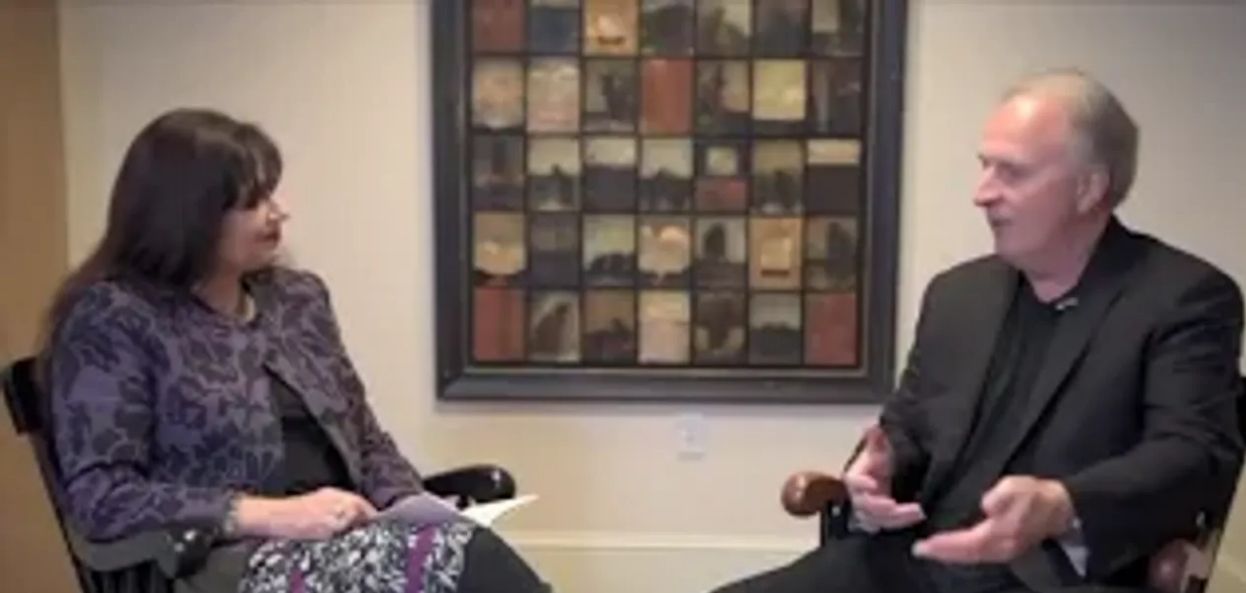

 A true visionary and reputed for his excellence in healthcare, education, leadership and social services, Dr. Shah received his medical degree from Bombay University, completed his cardiology training at Georgetown University Hospital. Dr. Shah moved to rural Southern Maryland 45 years ago with his wife, Dr. Ila Shah, a Pediatrician and his brother, Dr. U.K. Shah, a Gastroenterologist, and together they founded Shah Associates, the largest private multi-specialty practice in Maryland.
A true visionary and reputed for his excellence in healthcare, education, leadership and social services, Dr. Shah received his medical degree from Bombay University, completed his cardiology training at Georgetown University Hospital. Dr. Shah moved to rural Southern Maryland 45 years ago with his wife, Dr. Ila Shah, a Pediatrician and his brother, Dr. U.K. Shah, a Gastroenterologist, and together they founded Shah Associates, the largest private multi-specialty practice in Maryland.
 Dr. Shah has consistently used his personal connections with US Lawmakers to advocate for an increase in the number of medical schools and residencies, with the dual goal of improving access to care nationwide and allowing more qualified and deserving graduates, such as those from India, to practice in the US. As the President of AAPI, Dr. Shah facilitated trips to India with both Maryland Governor Martin O’Malley and a number of Members of Congress, including the current House Majority Leader, Steny Hoyer. In addition to general cultural exchange, Dr. Shah helped bring about the creation of a sister state relationship between Maryland and Maharashtra, with the purpose of encouraging research and investment in life-saving medical technology.
Dr. Shah has consistently used his personal connections with US Lawmakers to advocate for an increase in the number of medical schools and residencies, with the dual goal of improving access to care nationwide and allowing more qualified and deserving graduates, such as those from India, to practice in the US. As the President of AAPI, Dr. Shah facilitated trips to India with both Maryland Governor Martin O’Malley and a number of Members of Congress, including the current House Majority Leader, Steny Hoyer. In addition to general cultural exchange, Dr. Shah helped bring about the creation of a sister state relationship between Maryland and Maharashtra, with the purpose of encouraging research and investment in life-saving medical technology.  His literary skills came to be recognized around the world, when he penned the publication of “Antarnaad – Introspection,” created with images of India’s past, present and future with the purpose of educating younger generations in both India and the US as well as US lawmakers as to the strength of democracy. The accompanying documentary film he had produced describes the compelling story of The Golden Era, Islamic Invasion and British India, and was followed by Freedom Movement, Partition, and the Post-Independence India with emphasis on human weakness, corruption, license Raj, and the revolt by the people leading to the Promised Land.
His literary skills came to be recognized around the world, when he penned the publication of “Antarnaad – Introspection,” created with images of India’s past, present and future with the purpose of educating younger generations in both India and the US as well as US lawmakers as to the strength of democracy. The accompanying documentary film he had produced describes the compelling story of The Golden Era, Islamic Invasion and British India, and was followed by Freedom Movement, Partition, and the Post-Independence India with emphasis on human weakness, corruption, license Raj, and the revolt by the people leading to the Promised Land. In his opening remarks, Dr. Gautam Mukunda at The Center for Public Leadership, Harvard Kennedy School, Cambridge, MA, eloquently educated the audience on the history of universal adult franchise in the US, starting with the “fight by the Black Americans for voting rights in the US.” Stating that he had to learn the rising of the Indian Americans through academics, took the audience down the memory lane, when the 1st Indian American, Dalip Singh Saund to be elected to the US Congress in the 1950s. Referring to the pioneers of Color who had fought for equal rights and freedom, he said, “We could not be where we are today, if they did not fight for equal rights for all. There is no better way than running for office,” he said. Pointing to the many Speakers (Indian American Candidates Running for State Elective Offices in the Northeast of the United States), he said, “Everyone of you gives me hope. People in US believe that Indian Americans are capable of becoming leaders in the nation.”
In his opening remarks, Dr. Gautam Mukunda at The Center for Public Leadership, Harvard Kennedy School, Cambridge, MA, eloquently educated the audience on the history of universal adult franchise in the US, starting with the “fight by the Black Americans for voting rights in the US.” Stating that he had to learn the rising of the Indian Americans through academics, took the audience down the memory lane, when the 1st Indian American, Dalip Singh Saund to be elected to the US Congress in the 1950s. Referring to the pioneers of Color who had fought for equal rights and freedom, he said, “We could not be where we are today, if they did not fight for equal rights for all. There is no better way than running for office,” he said. Pointing to the many Speakers (Indian American Candidates Running for State Elective Offices in the Northeast of the United States), he said, “Everyone of you gives me hope. People in US believe that Indian Americans are capable of becoming leaders in the nation.” Rupande Mehta from New Jersey, a candidate for NJ State Senate District 25, said, “I have been working in my community for long, which needs a new leader, who can represents our values of my state and my constituents.” Describing his life as “My story is a story of dreams. Coming from Mumbai, seeking freedom, I am running for office, because representation matters.” If elected she will be the first person of South Asian to be elected from his District. “I am ready to take on the most conservative, who has no regard for public safety,” Mehta added.
Rupande Mehta from New Jersey, a candidate for NJ State Senate District 25, said, “I have been working in my community for long, which needs a new leader, who can represents our values of my state and my constituents.” Describing his life as “My story is a story of dreams. Coming from Mumbai, seeking freedom, I am running for office, because representation matters.” If elected she will be the first person of South Asian to be elected from his District. “I am ready to take on the most conservative, who has no regard for public safety,” Mehta added. 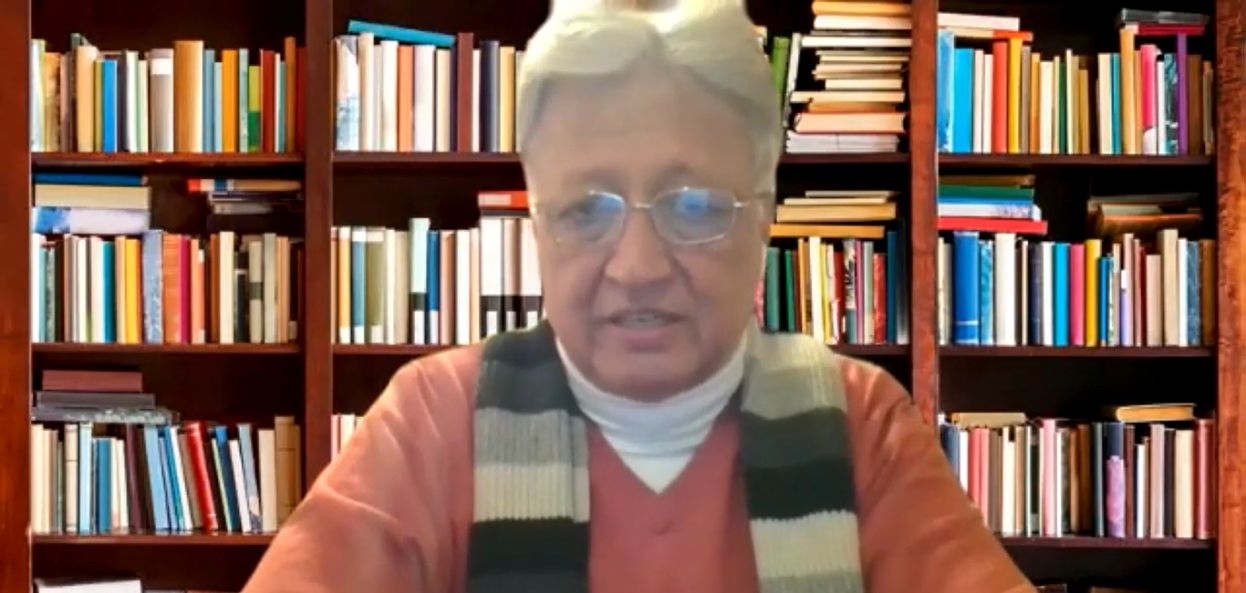
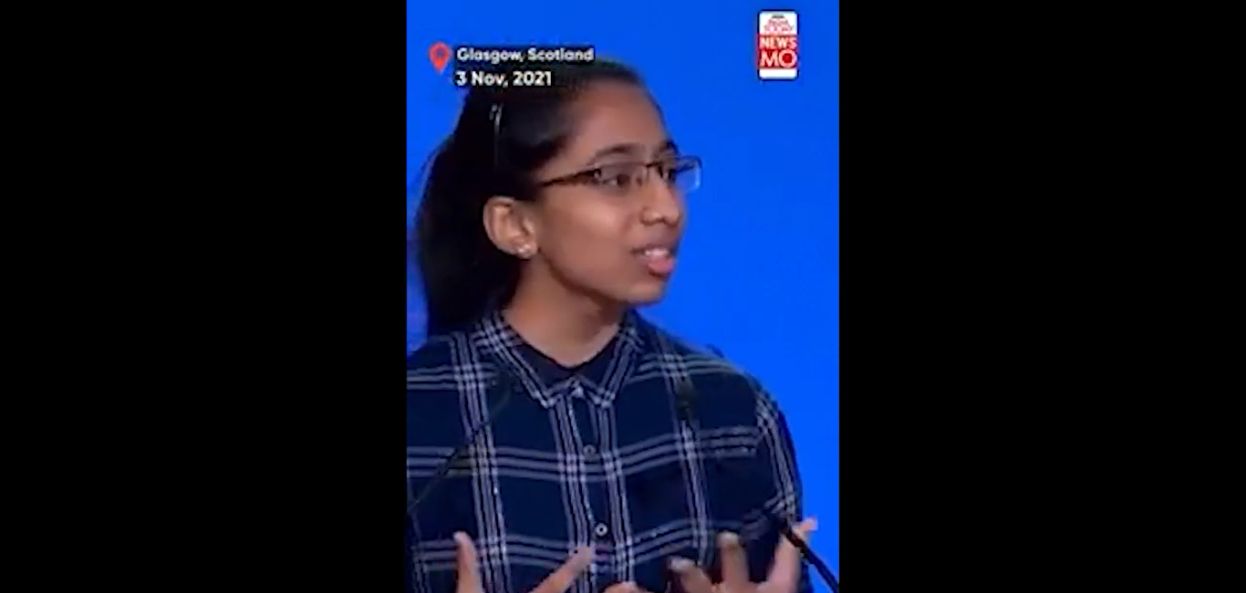
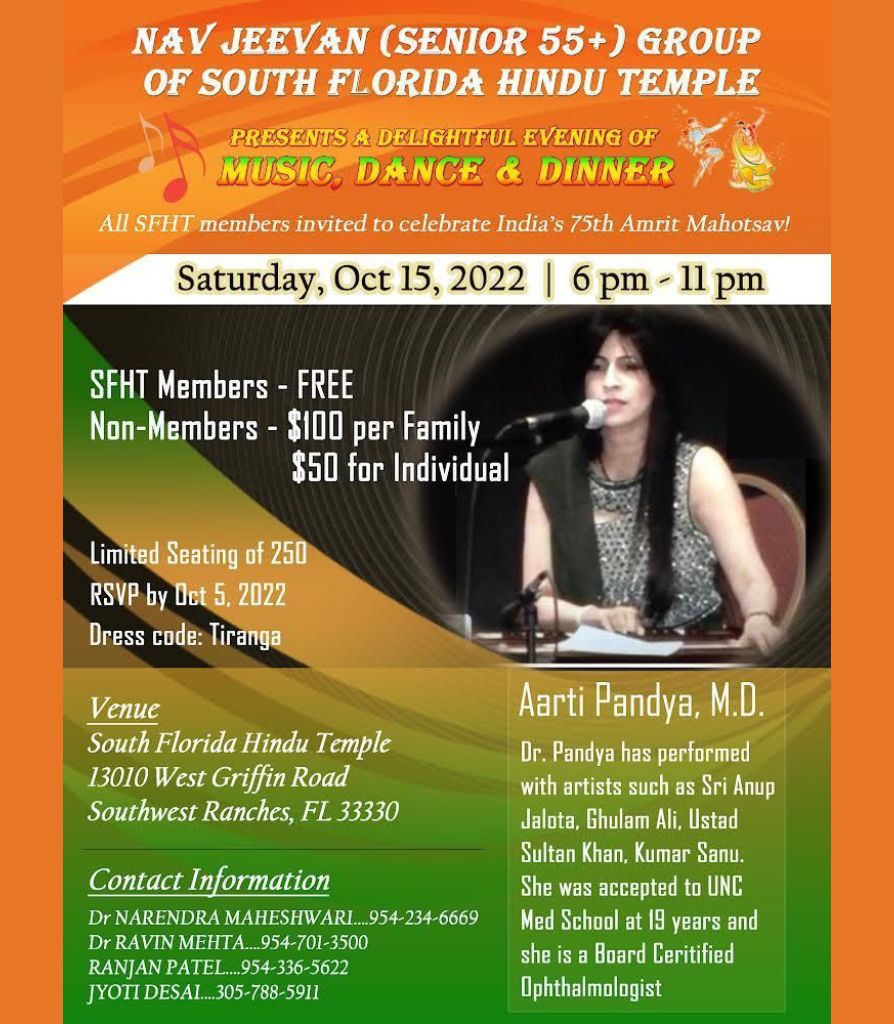




 Syed Mushtaq Hussain started his speech with a minute silence for people who lost their lives due to Covid 19 and the prize distribution ceremony was held, and later Lunch was served. United Cricket Day T20 League, closing ceremony was held on 11th October 2020 at Skokie Sports Park district cricket ground. Final match was played between Anjuman vs Chicago Reds. Chicago Reds scored 184 in first innings. Ahsan Syed of Anjuman played extraordinary innings of 121 runs and led his team to an easy Victory in Finals. Ahsan was Man of the Match. Salman Karbhai won Man of the Series, Best Batsman and Best Bowler. At the end both the teams have shown great sportsmanship. Cricket lovers came to support the final match.
Syed Mushtaq Hussain started his speech with a minute silence for people who lost their lives due to Covid 19 and the prize distribution ceremony was held, and later Lunch was served. United Cricket Day T20 League, closing ceremony was held on 11th October 2020 at Skokie Sports Park district cricket ground. Final match was played between Anjuman vs Chicago Reds. Chicago Reds scored 184 in first innings. Ahsan Syed of Anjuman played extraordinary innings of 121 runs and led his team to an easy Victory in Finals. Ahsan was Man of the Match. Salman Karbhai won Man of the Series, Best Batsman and Best Bowler. At the end both the teams have shown great sportsmanship. Cricket lovers came to support the final match.
 Adil Azeem Khan (UCL President) wants to thank all the teams who participated in UCL Day League, Umpires Abdul Rauf & Shabbir Patel, league MC Sufiyan Dukanwala and also supporters who has supported the league. Adil Azeem (UCL president) humbly requests all cricket lovers to support cricket in Chicago. Specially thanks to our sponsors for the UCL Day League (First savings bank, Pepsi, Happy mortgage, Devon discount pharmacy, Air tour travels, Patel Brothers, Sabri Nahari and MP Jewelers.)
Adil Azeem Khan (UCL President) wants to thank all the teams who participated in UCL Day League, Umpires Abdul Rauf & Shabbir Patel, league MC Sufiyan Dukanwala and also supporters who has supported the league. Adil Azeem (UCL president) humbly requests all cricket lovers to support cricket in Chicago. Specially thanks to our sponsors for the UCL Day League (First savings bank, Pepsi, Happy mortgage, Devon discount pharmacy, Air tour travels, Patel Brothers, Sabri Nahari and MP Jewelers.) Adil Azeem is very thankful to the management, Ayaz Patel( UCL web designer), Ahsan syed(scheduler), Sufiyan Dukaanwala(UCL Manager), Javed Patel (League Advisor), Shaik Ahmed(League Advisor), Athar Syed (League Advisor), Mohammed Afroz(League Advisor), Dr. Syed Ahmed(League Advisor), Arif Khan and thankful to Asian Media USA and Z TV Mr. & Mrs. Vandana Kumar.
Adil Azeem is very thankful to the management, Ayaz Patel( UCL web designer), Ahsan syed(scheduler), Sufiyan Dukaanwala(UCL Manager), Javed Patel (League Advisor), Shaik Ahmed(League Advisor), Athar Syed (League Advisor), Mohammed Afroz(League Advisor), Dr. Syed Ahmed(League Advisor), Arif Khan and thankful to Asian Media USA and Z TV Mr. & Mrs. Vandana Kumar.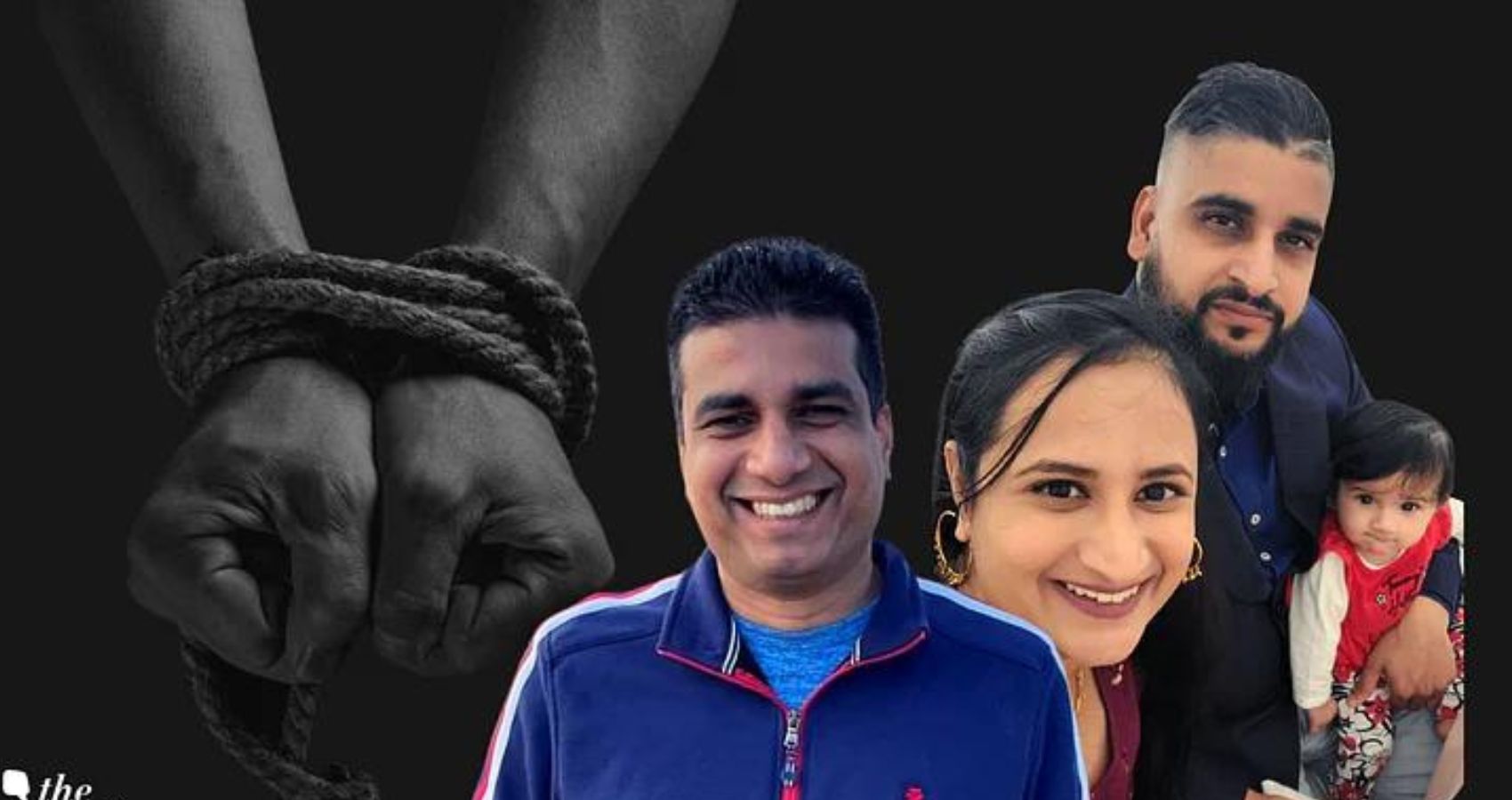
 What you’ll need 1 cup quinoa 2 cups water1 teaspoon salt1/4 cup lemon juice3 tablespoons olive oil1/2teaspoon of freshly ground peppercorns 2 grated garlic cloves1/2 cup chopped cucumber 1/3 chopped cherry tomatoes 1/2 cup chopped yellow bell peppers 1/4 cup chopped parsley leaves 2 tablespoons chopped mint leaves 1 cup chopped smoked tofu How to make . Bring water to boil with half a teaspoon of salt and cook the quinoa in it keeping the deep bottom pan closed- for about 15-20 minutes until the quinoa has cooked fluffy enough soaking up all the water. . At this point, turn off the heat, remove the lid, gently fluff up the quinoa with your spoon and let it cool down.. Meantime, prepare the dressing by whisking up the olive oil, lemon juice, garlic, pepper and salt in a small bowl..Add the cooled down quinoa, tofu, veggies and the herbs into a bigger bowl and pour in the tangy dressing. Give it a good and gentle mix just enough to combine..Serve it right away in your favourite salad bowl.
What you’ll need 1 cup quinoa 2 cups water1 teaspoon salt1/4 cup lemon juice3 tablespoons olive oil1/2teaspoon of freshly ground peppercorns 2 grated garlic cloves1/2 cup chopped cucumber 1/3 chopped cherry tomatoes 1/2 cup chopped yellow bell peppers 1/4 cup chopped parsley leaves 2 tablespoons chopped mint leaves 1 cup chopped smoked tofu How to make . Bring water to boil with half a teaspoon of salt and cook the quinoa in it keeping the deep bottom pan closed- for about 15-20 minutes until the quinoa has cooked fluffy enough soaking up all the water. . At this point, turn off the heat, remove the lid, gently fluff up the quinoa with your spoon and let it cool down.. Meantime, prepare the dressing by whisking up the olive oil, lemon juice, garlic, pepper and salt in a small bowl..Add the cooled down quinoa, tofu, veggies and the herbs into a bigger bowl and pour in the tangy dressing. Give it a good and gentle mix just enough to combine..Serve it right away in your favourite salad bowl.  Notes, tips and suggestions -You could use plain tofu or other flavoured tofu (eg. coriander tofu) instead of the smoked tofu if you don’t prefer smokey flavour to the salad.-You could even use drained cooked/canned chickpeas or sprouts as a substitute for tofu, if you are not a fan of tofu or if you are allergic to soy.-Choice of veggies are also partially upto you, for you could totally feel free to add in more veggies or substitute veggies you don’t prefer in this recipe with peas, corn, olives, jalapeños,etc.
Notes, tips and suggestions -You could use plain tofu or other flavoured tofu (eg. coriander tofu) instead of the smoked tofu if you don’t prefer smokey flavour to the salad.-You could even use drained cooked/canned chickpeas or sprouts as a substitute for tofu, if you are not a fan of tofu or if you are allergic to soy.-Choice of veggies are also partially upto you, for you could totally feel free to add in more veggies or substitute veggies you don’t prefer in this recipe with peas, corn, olives, jalapeños,etc.